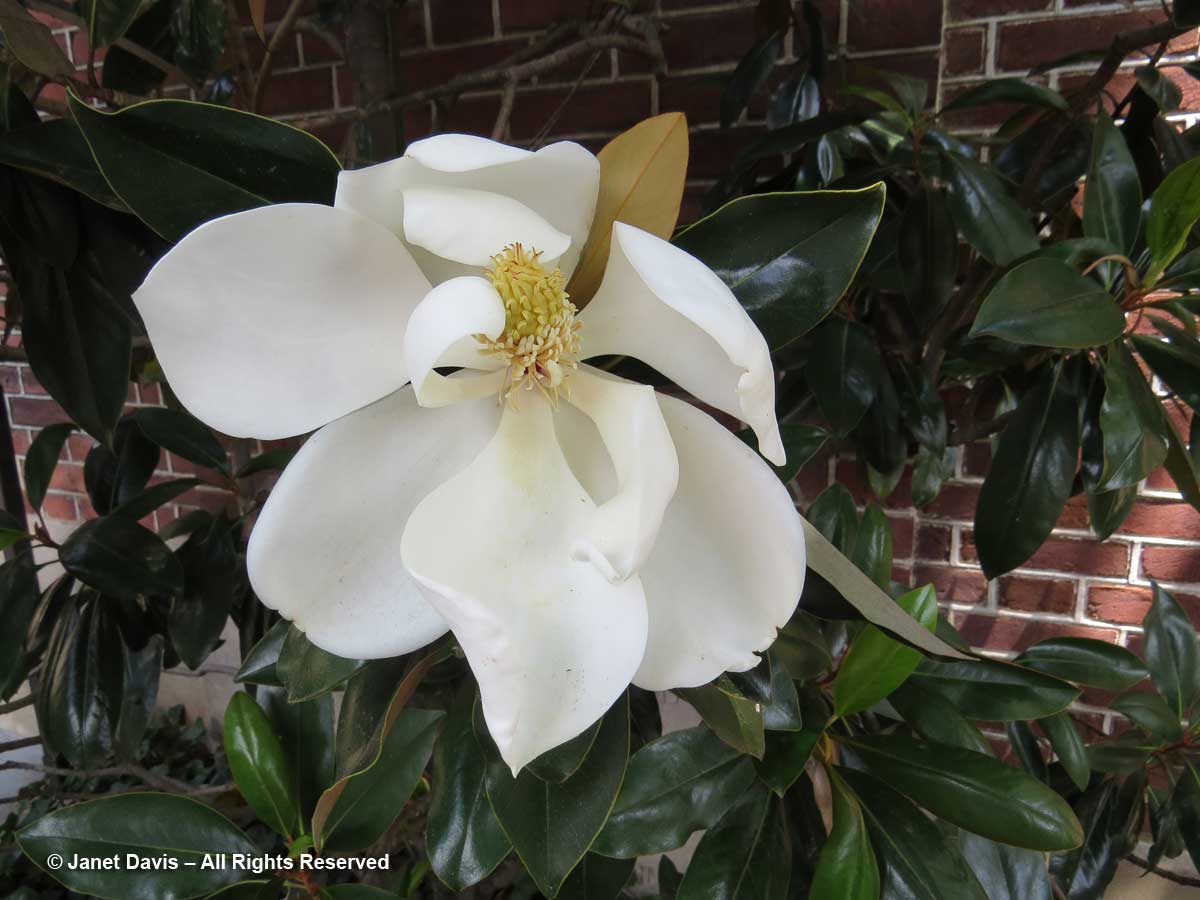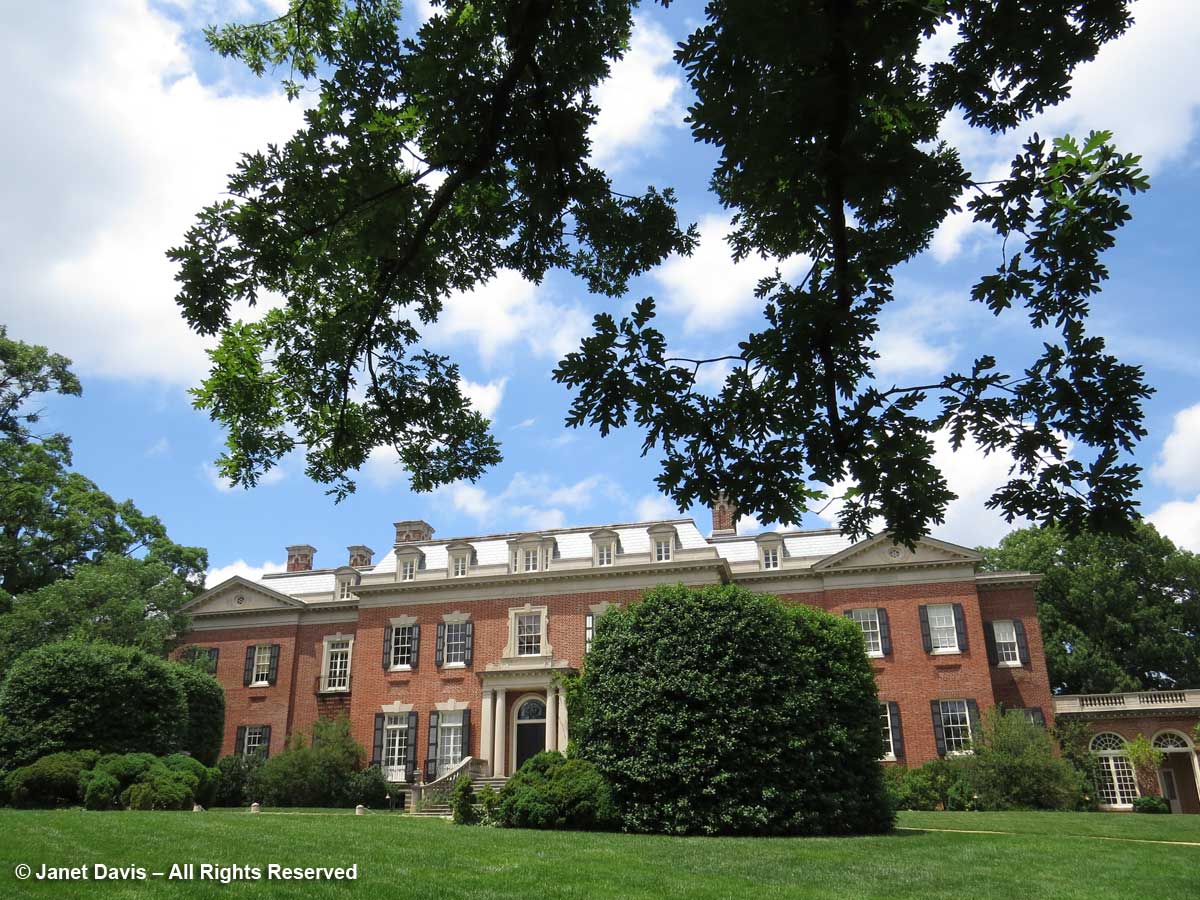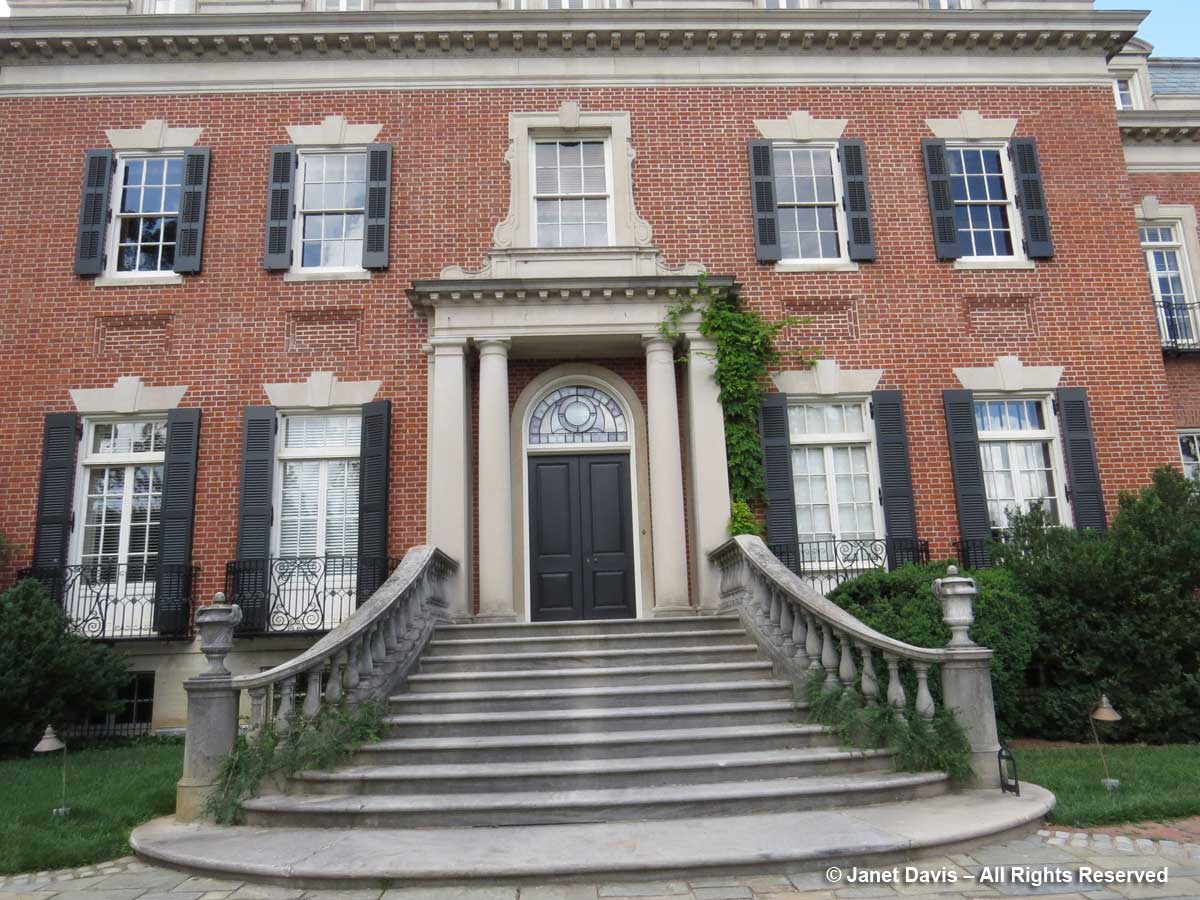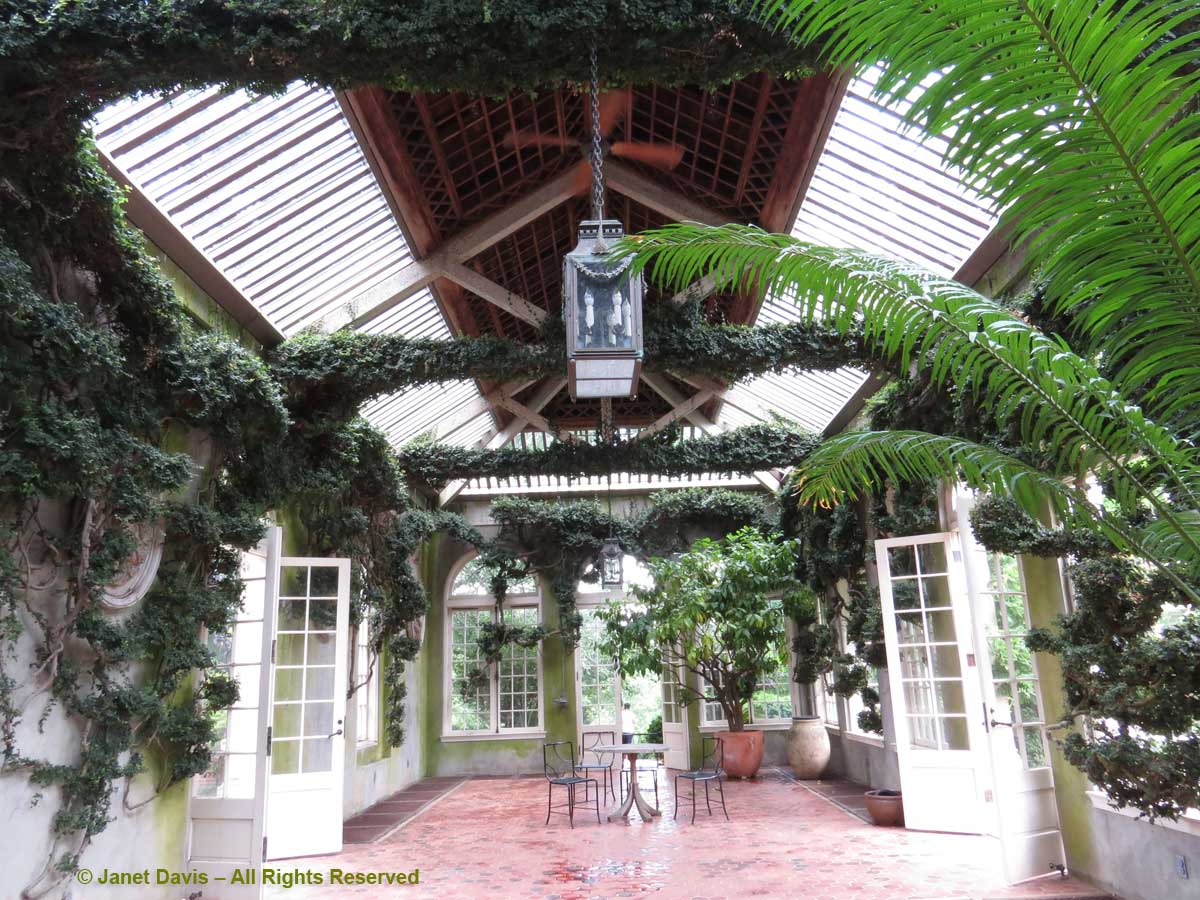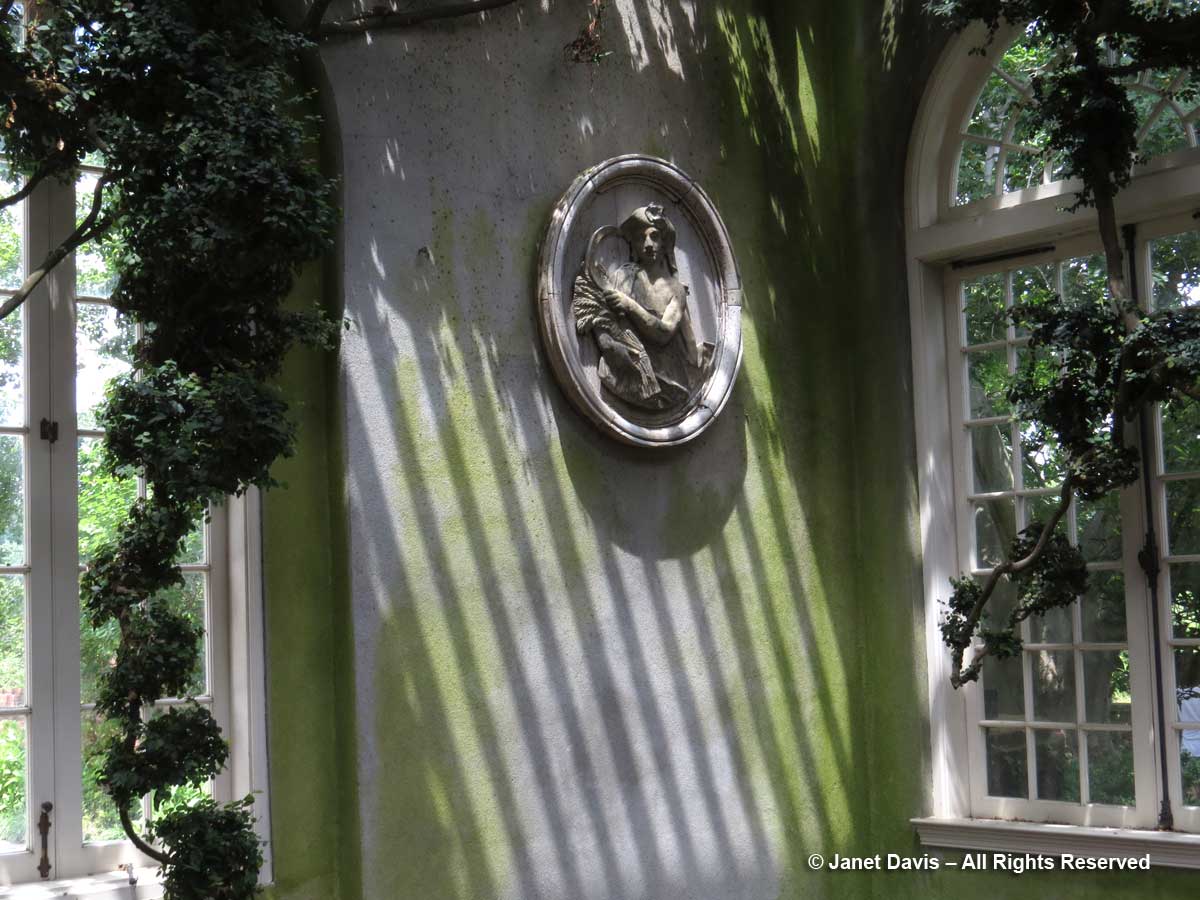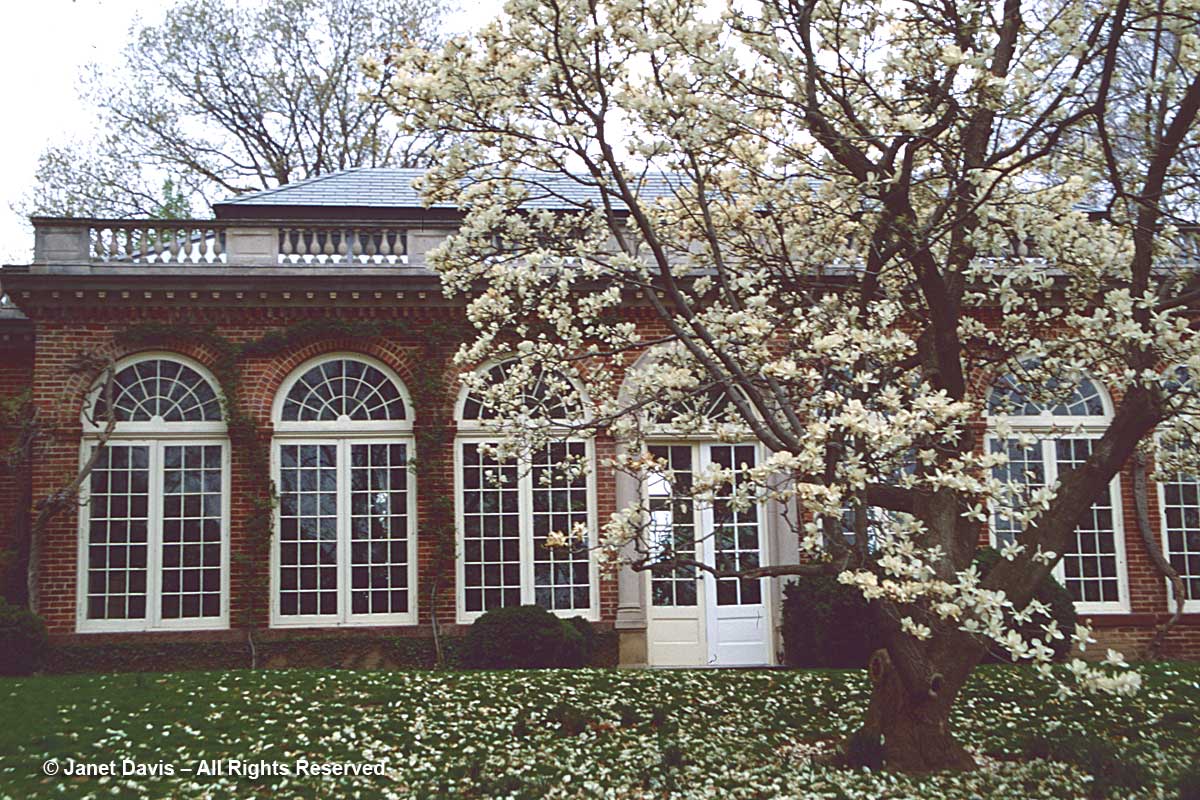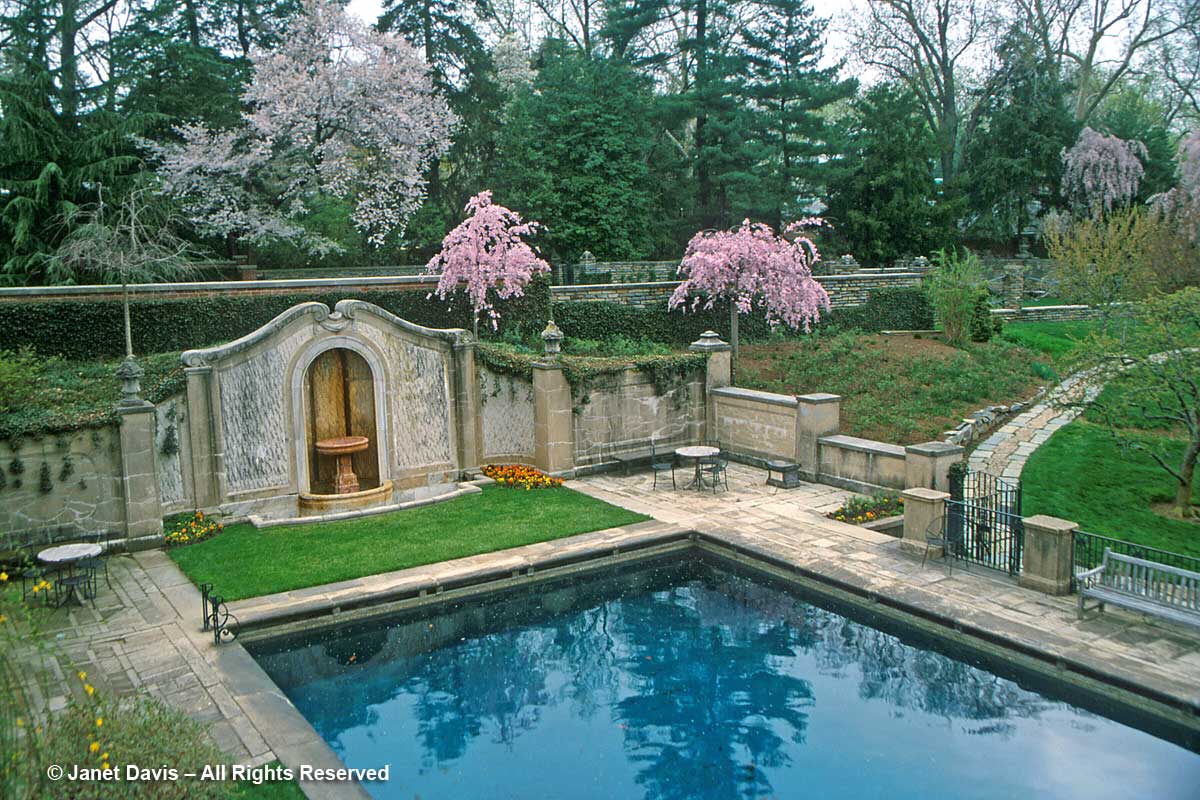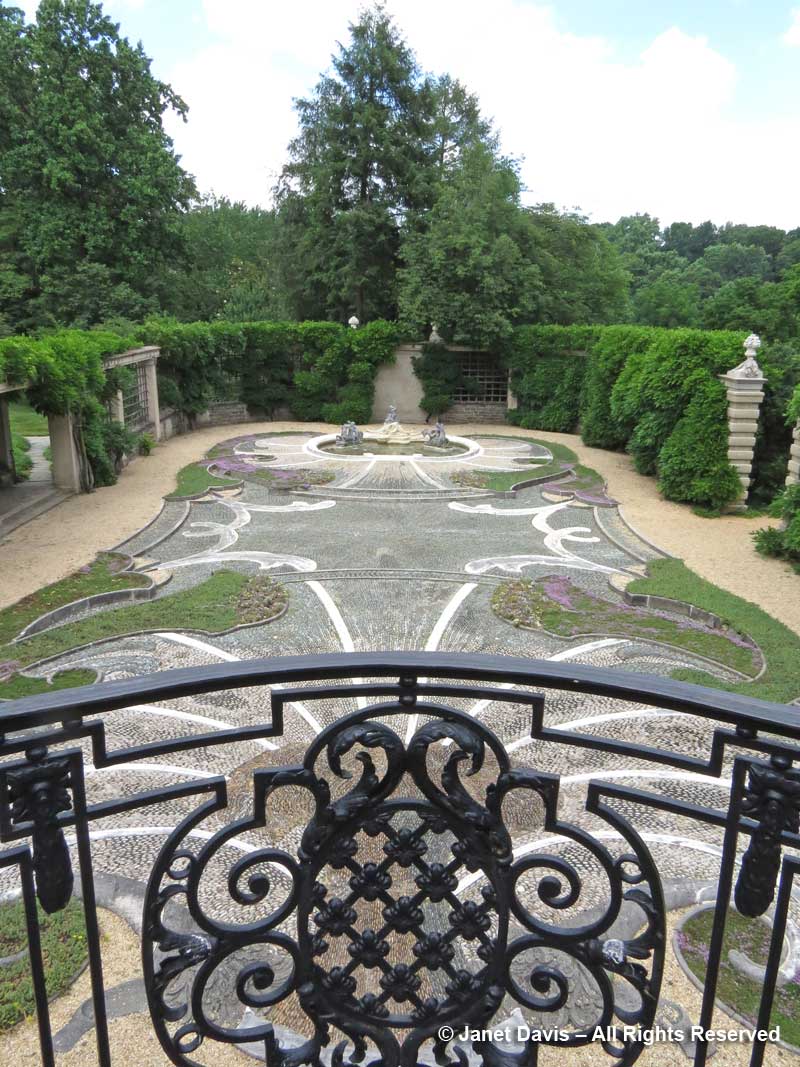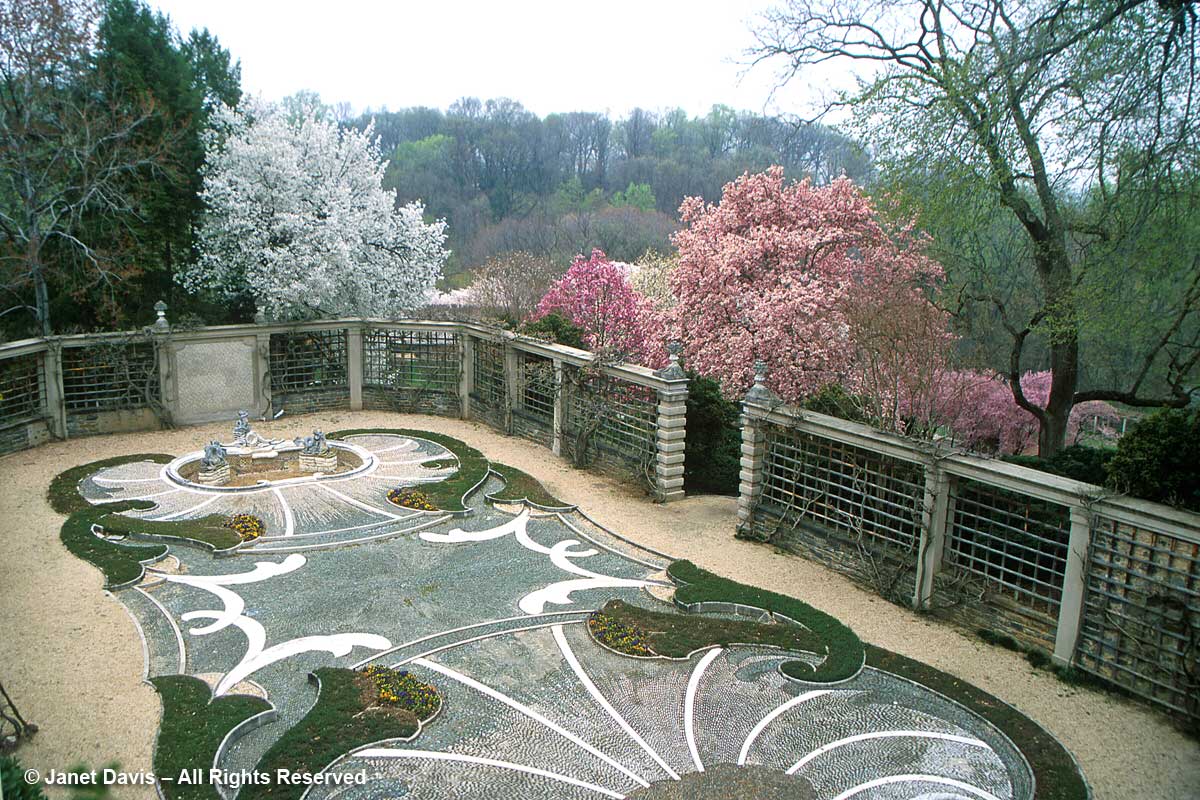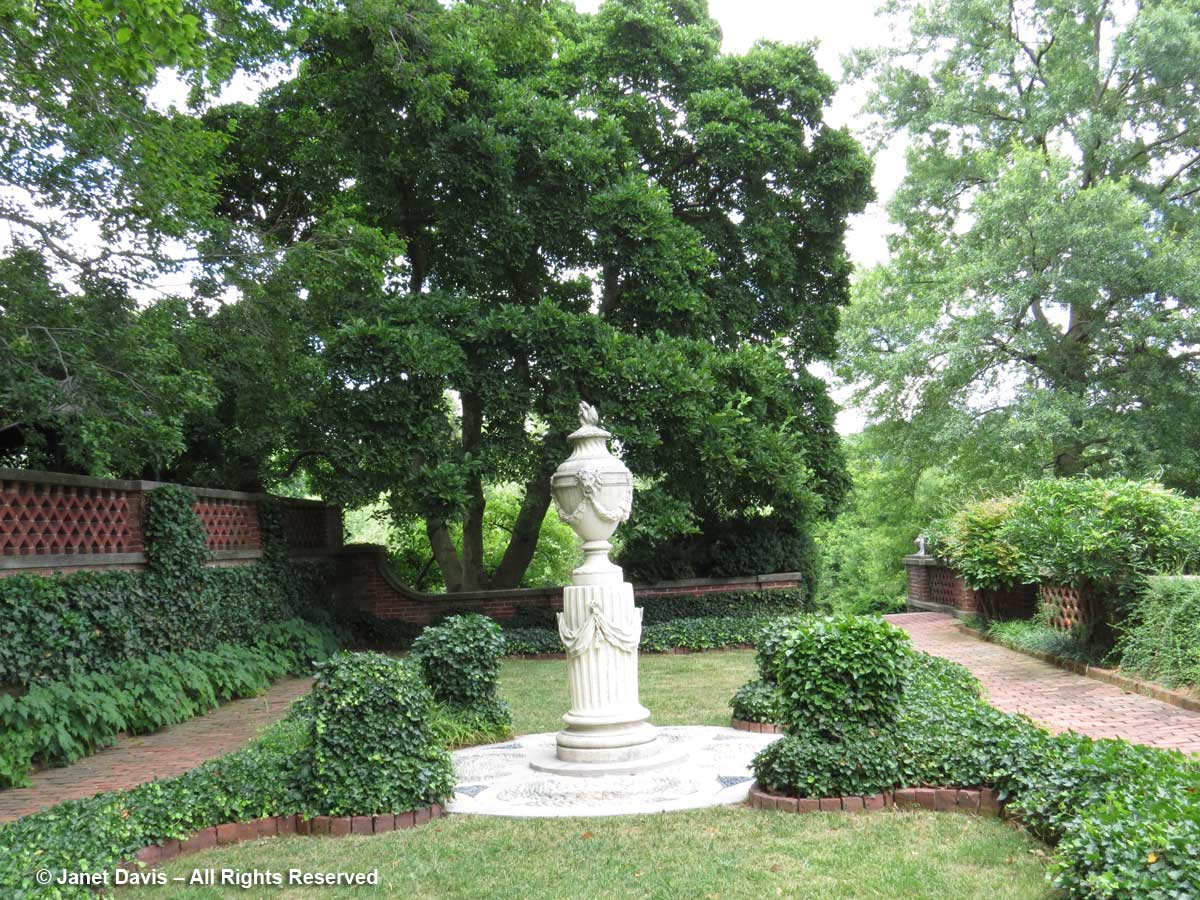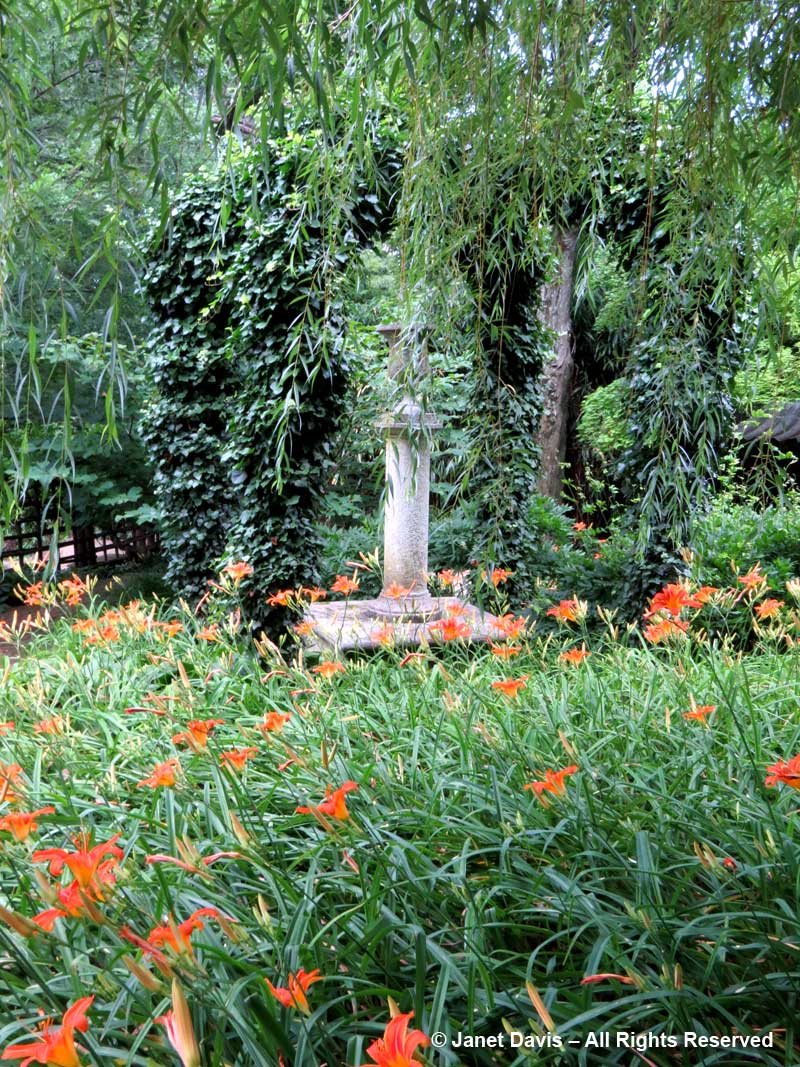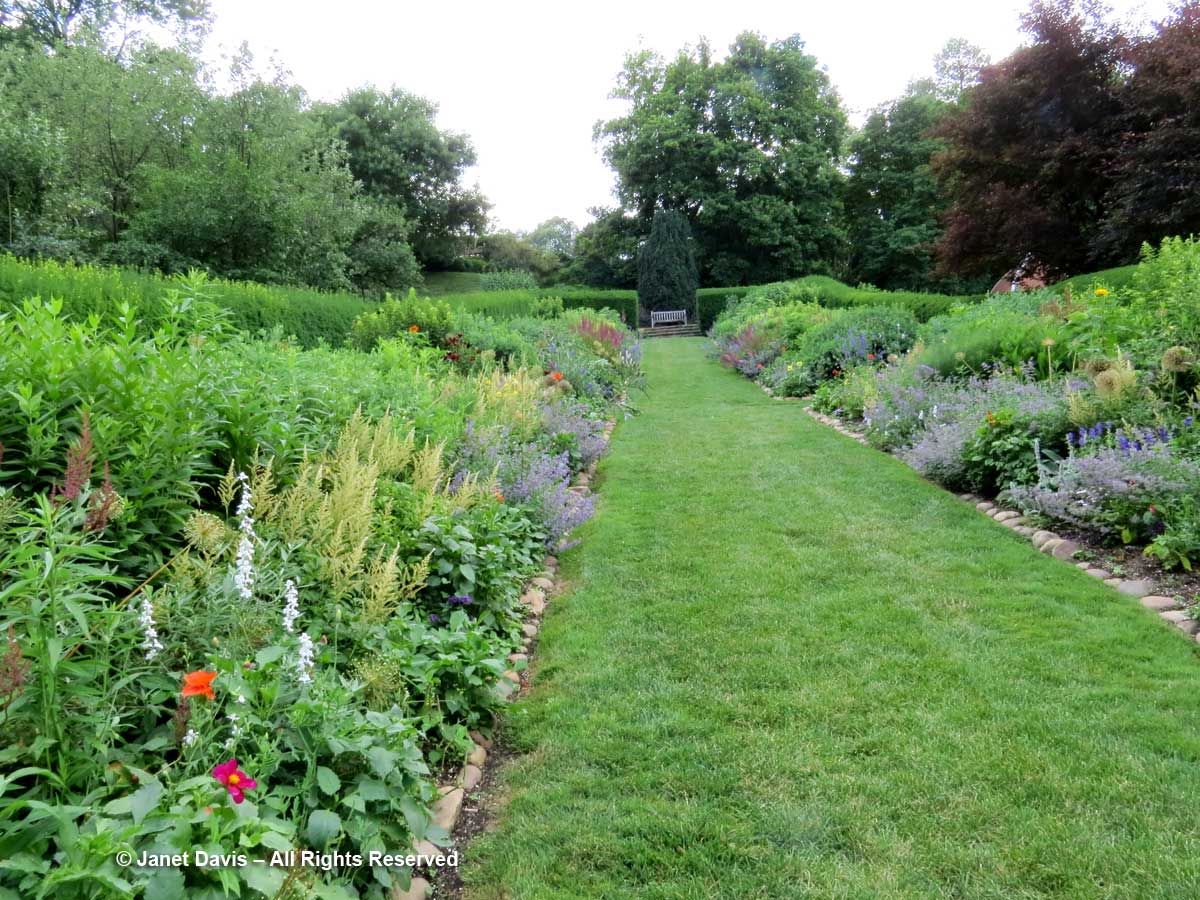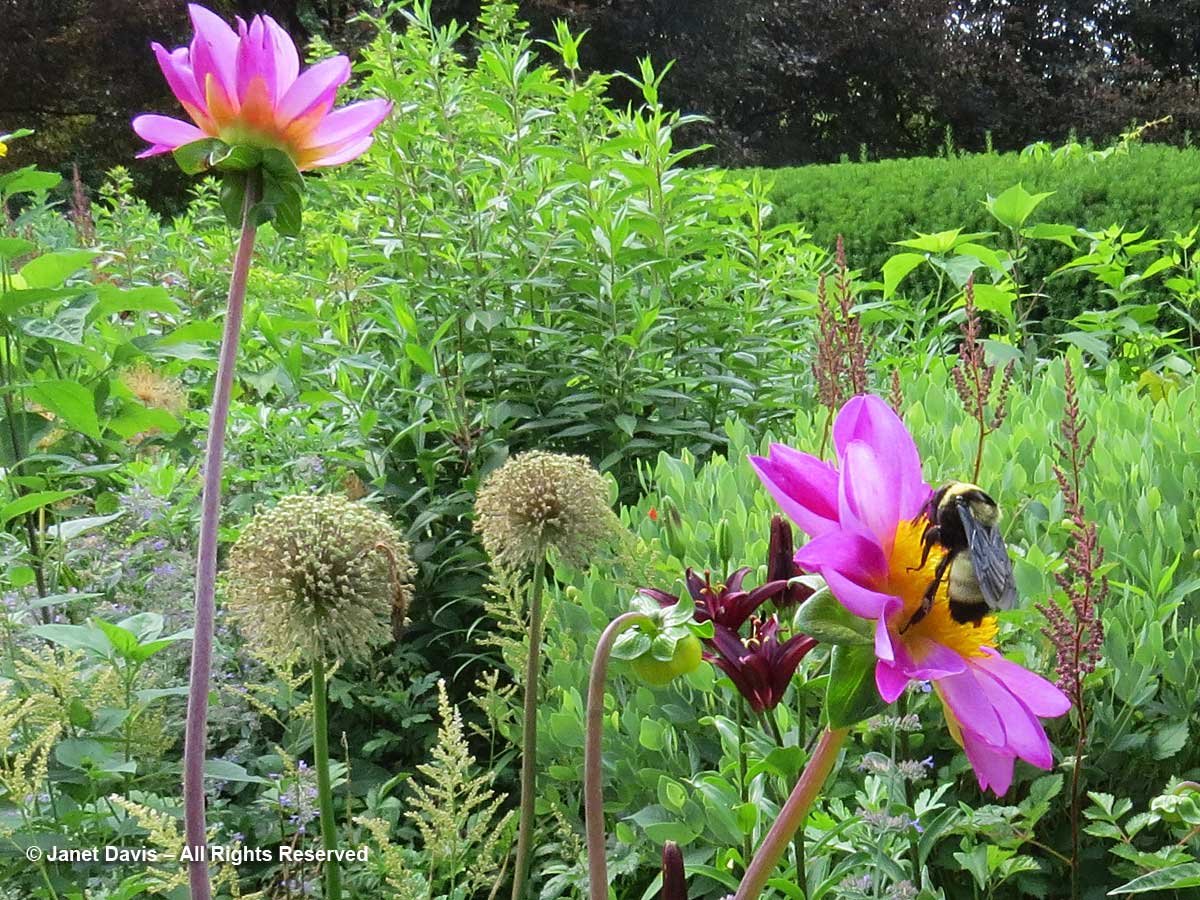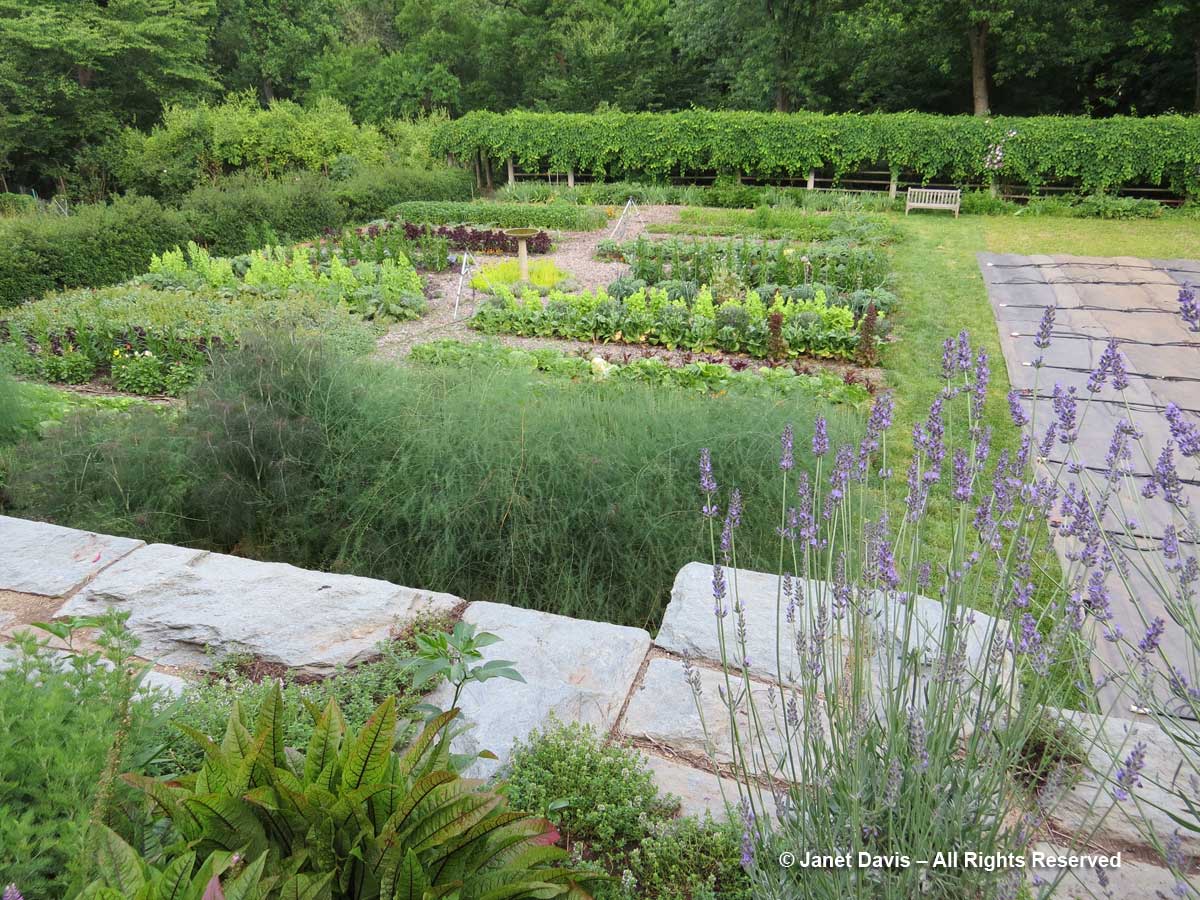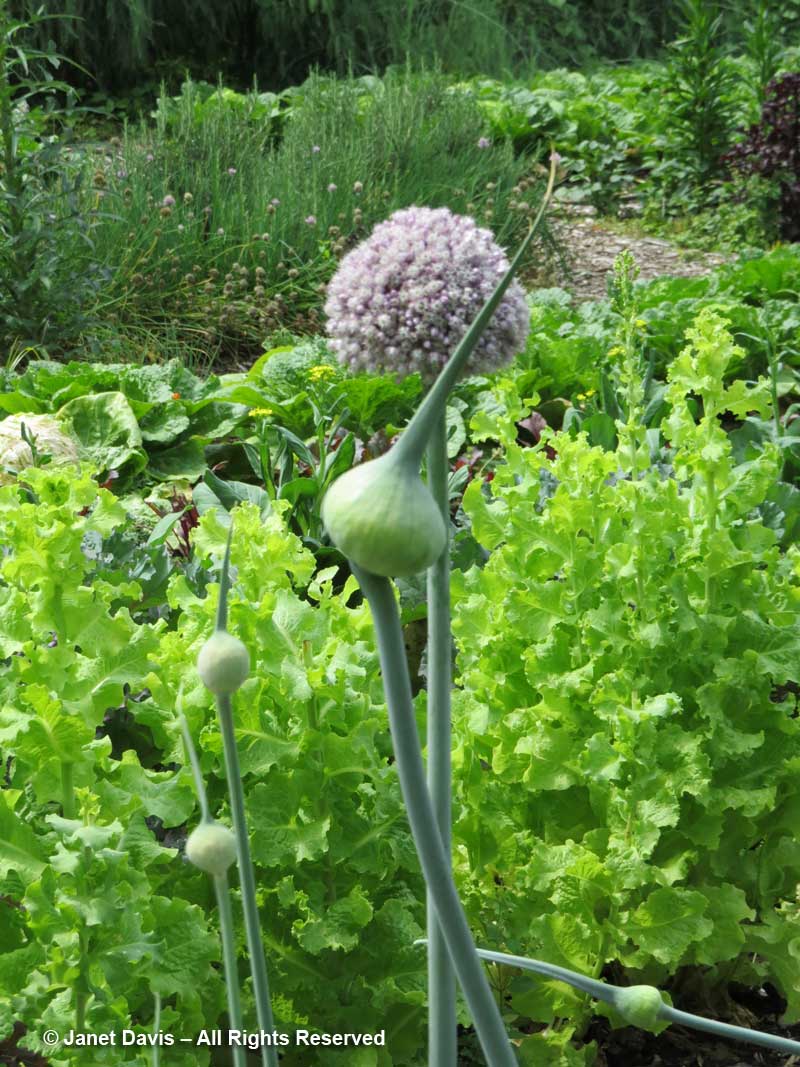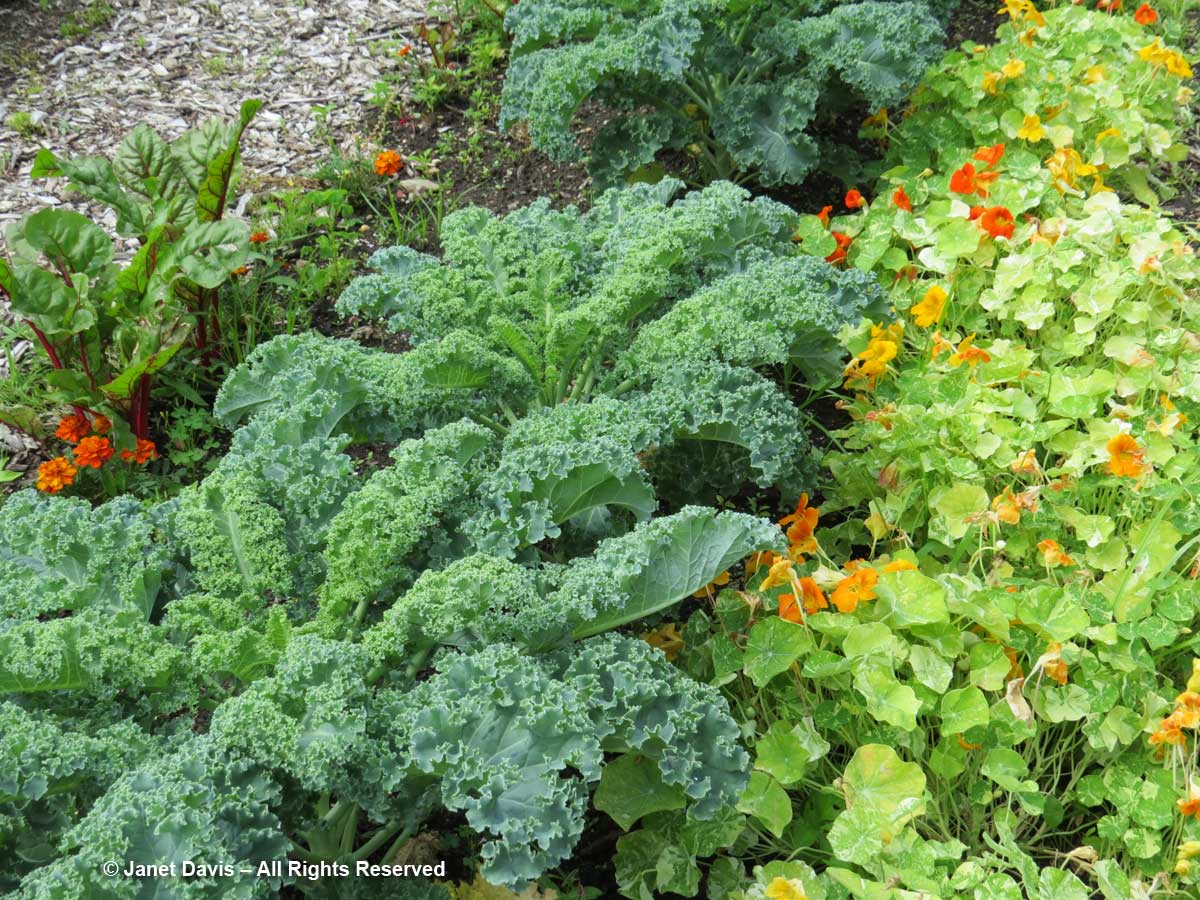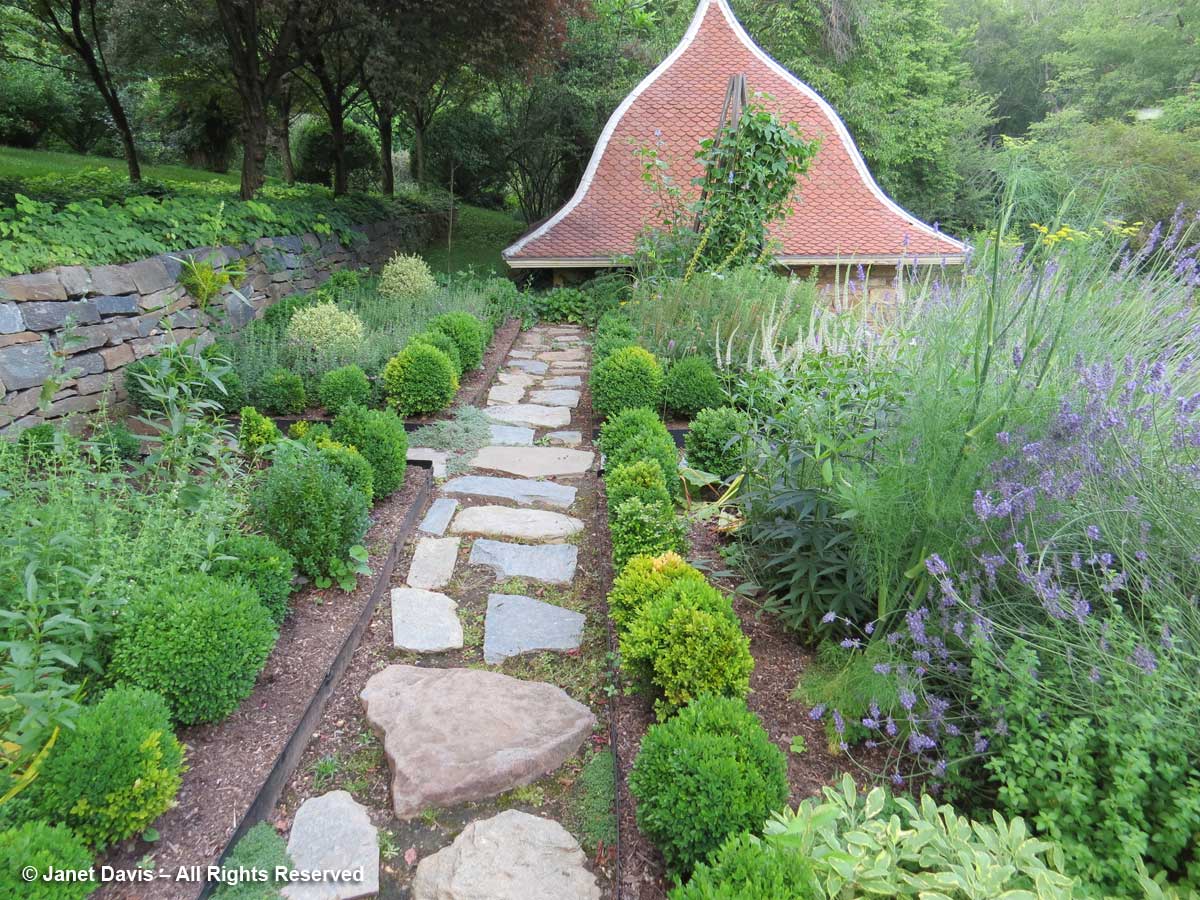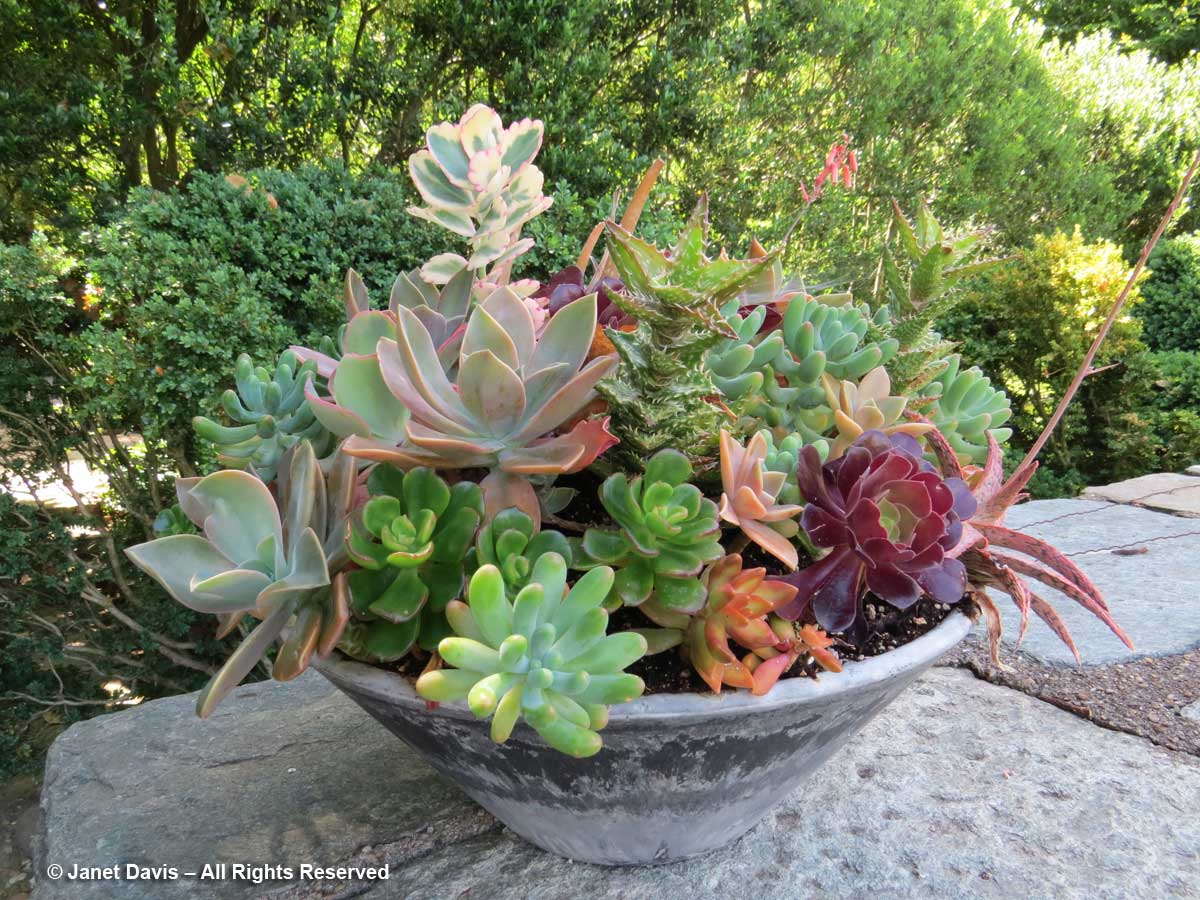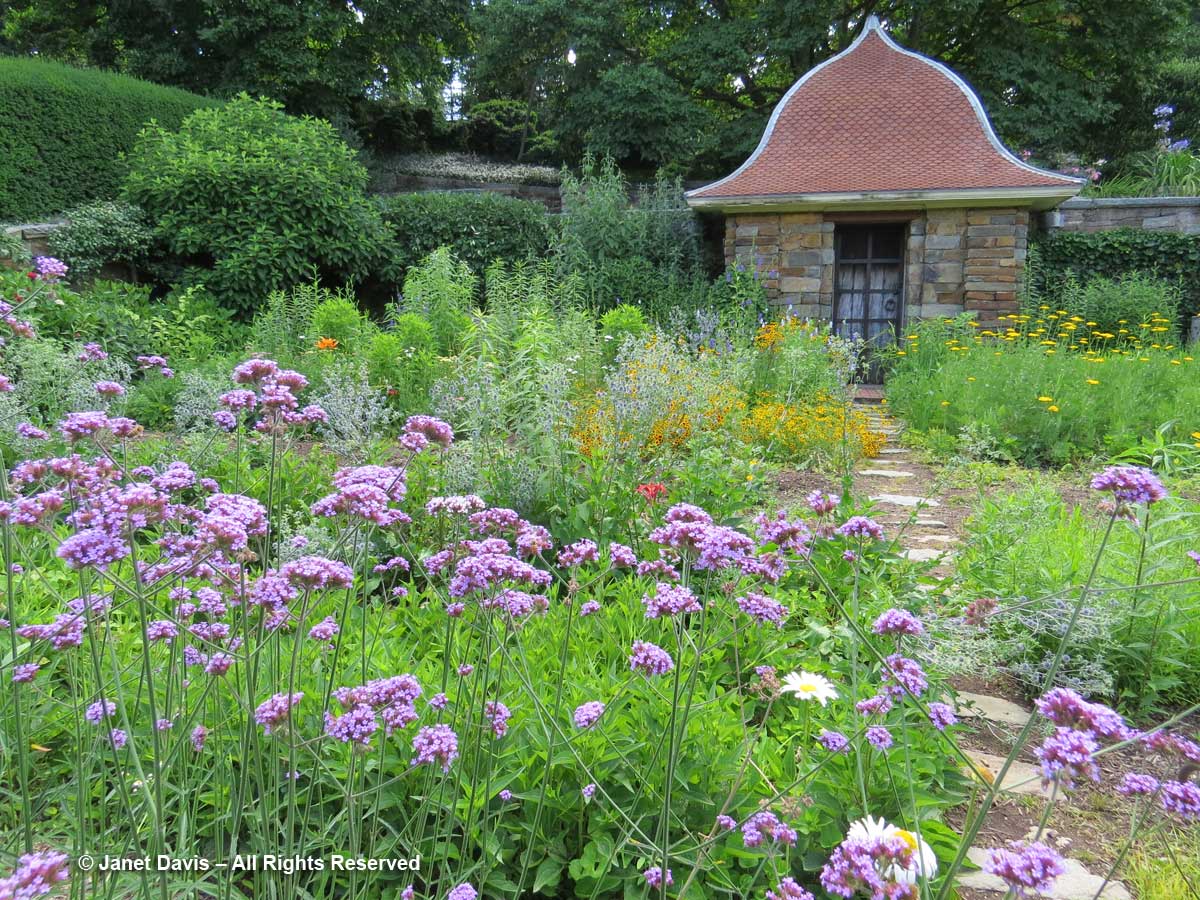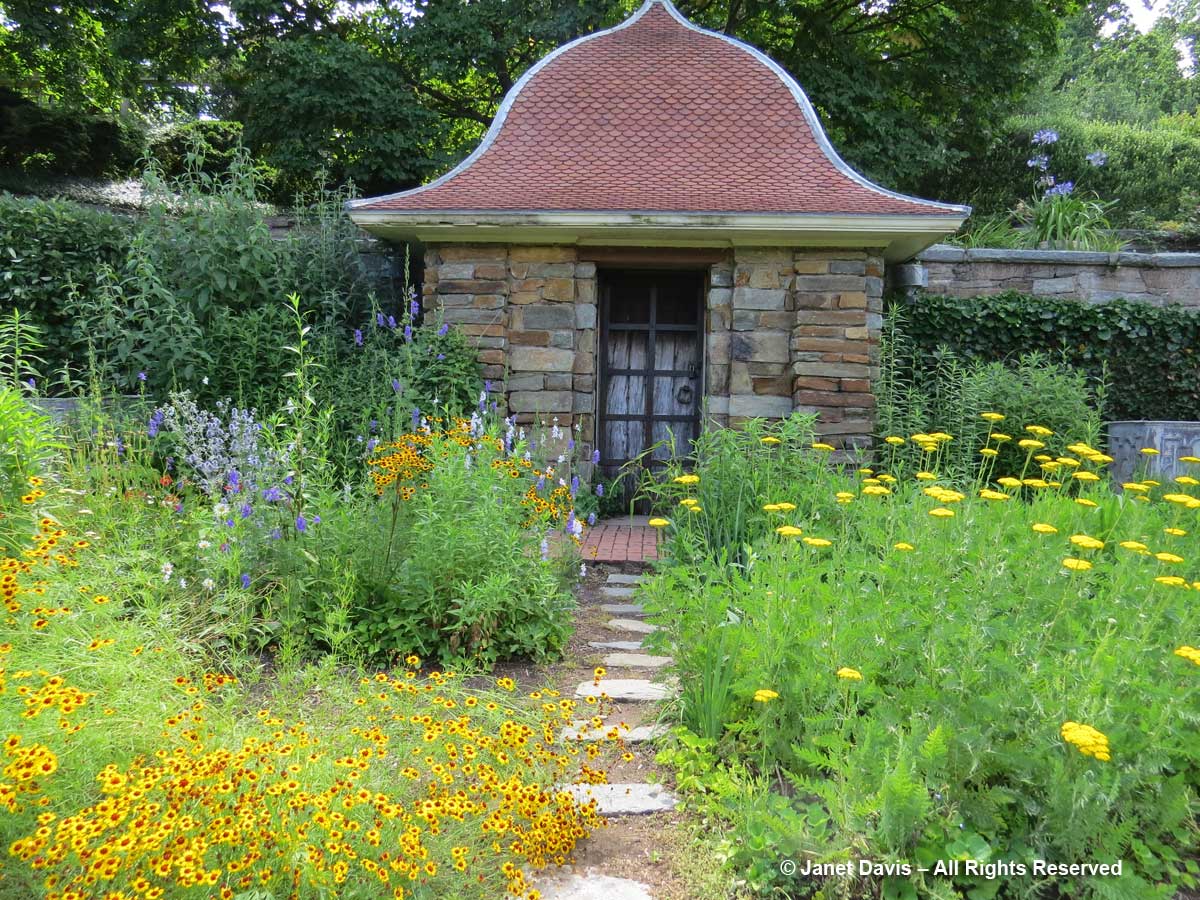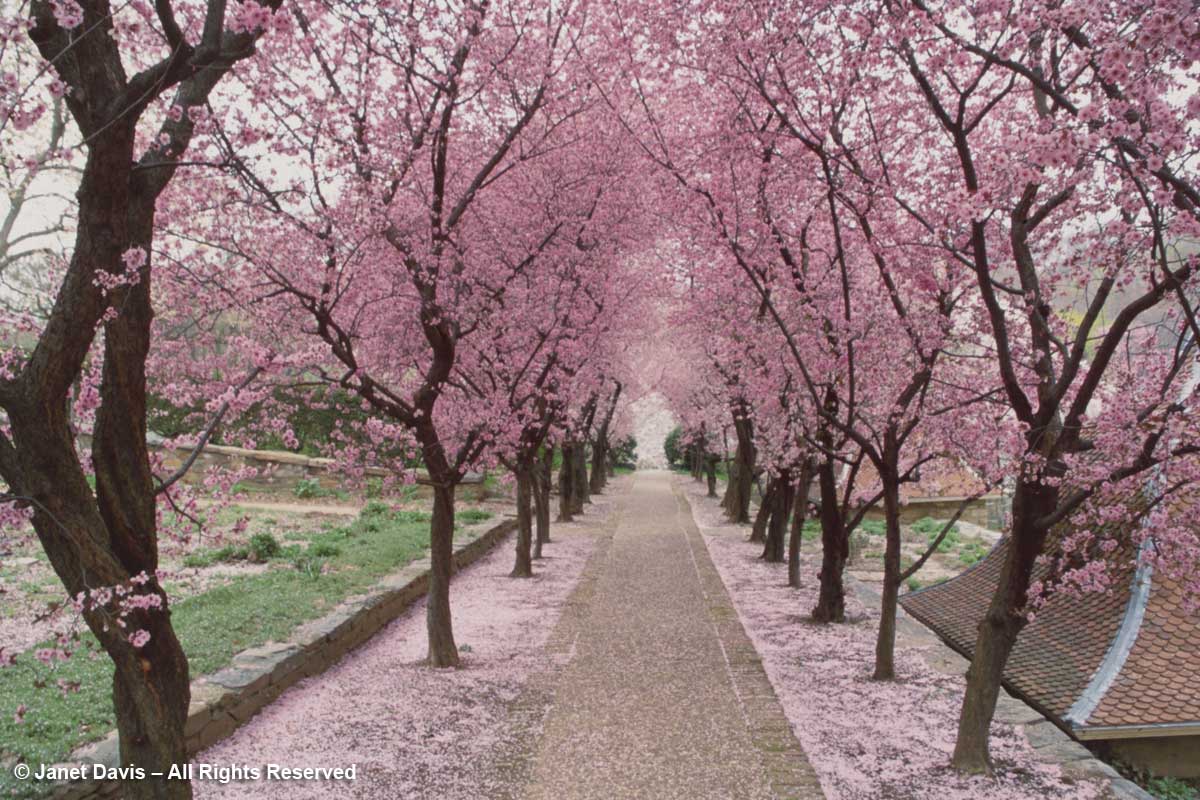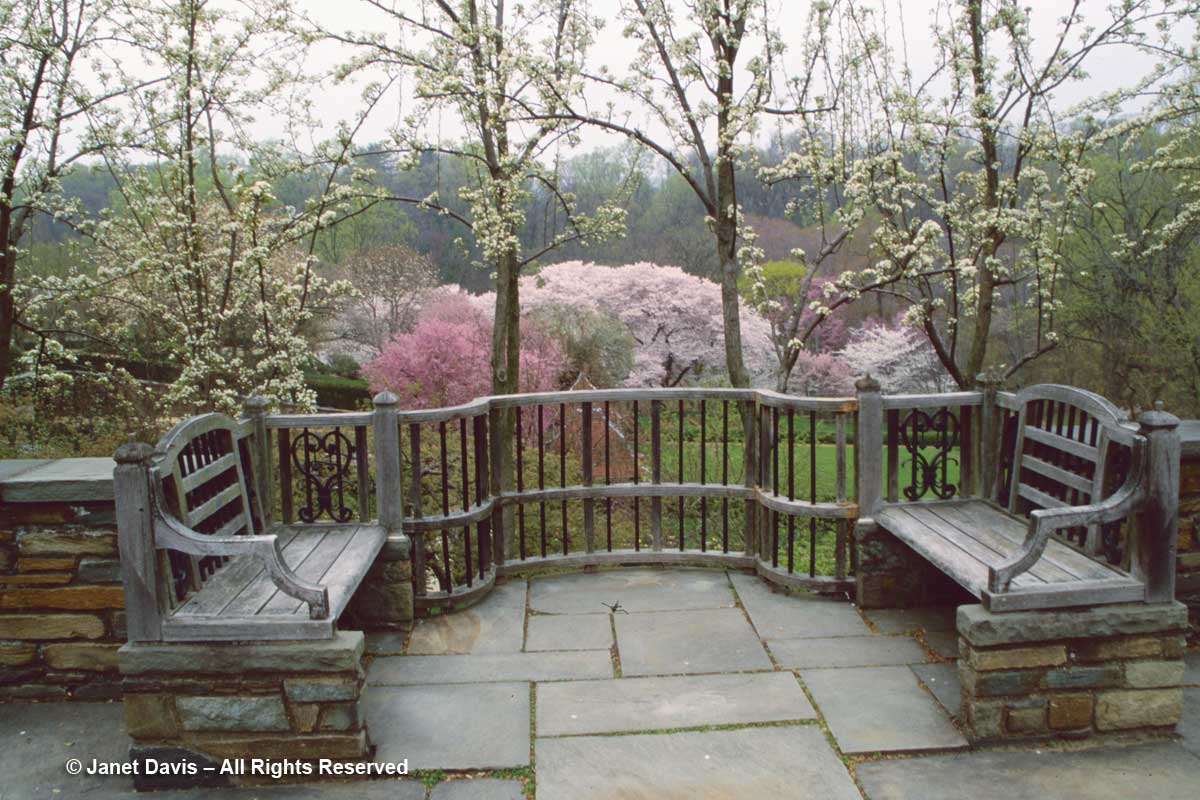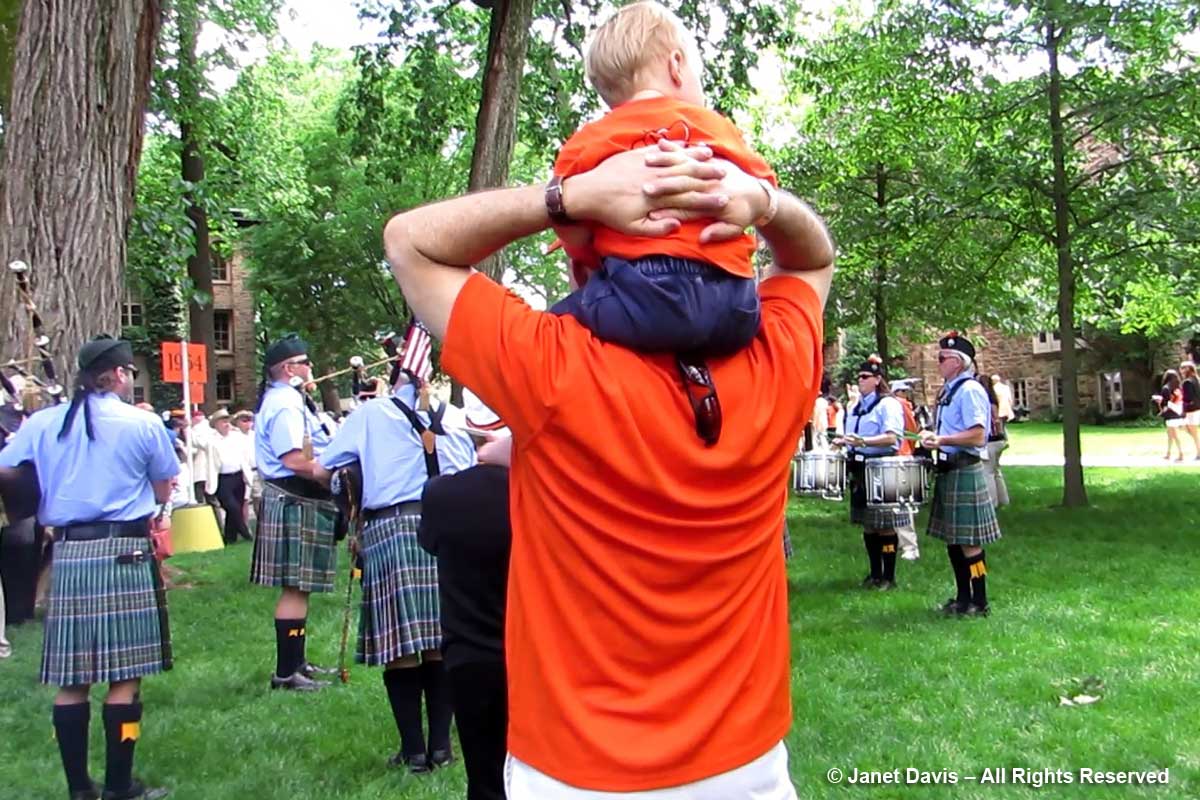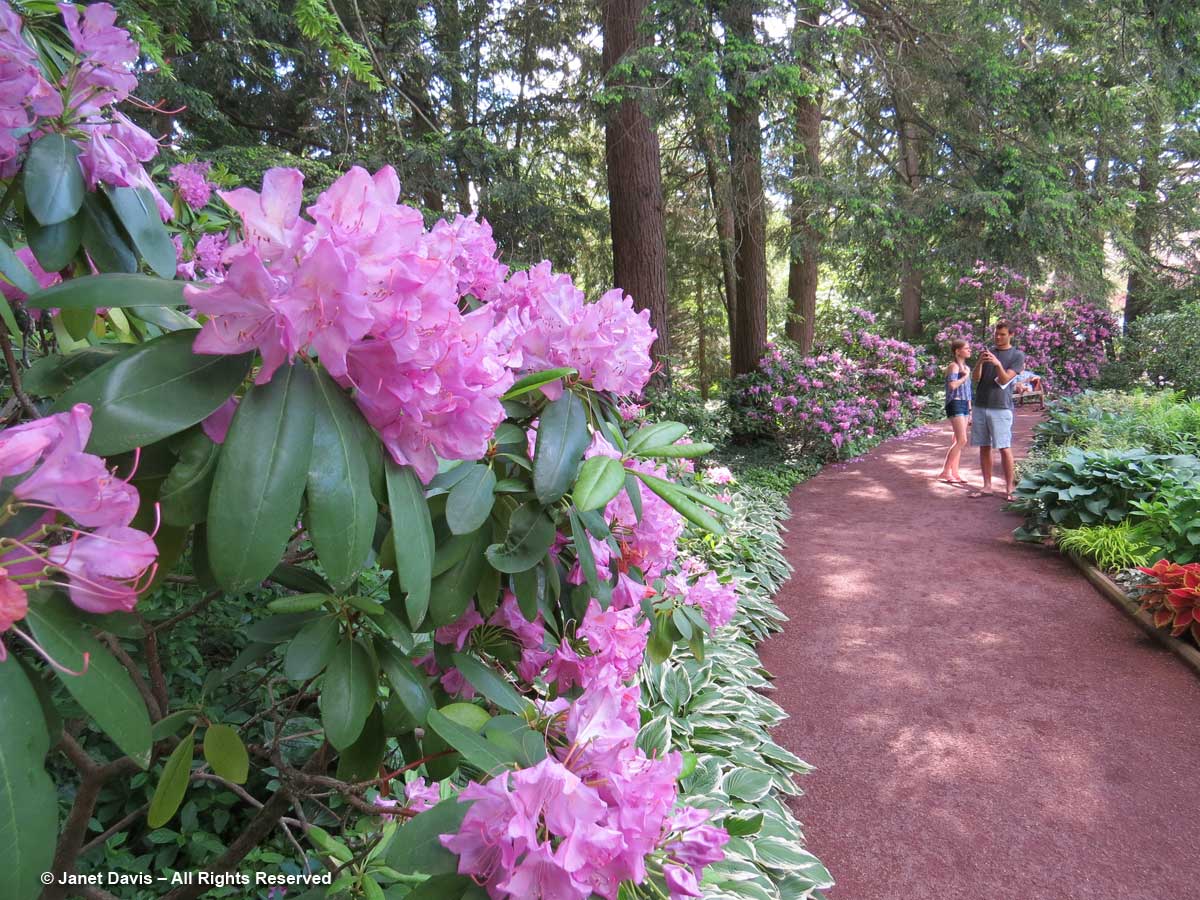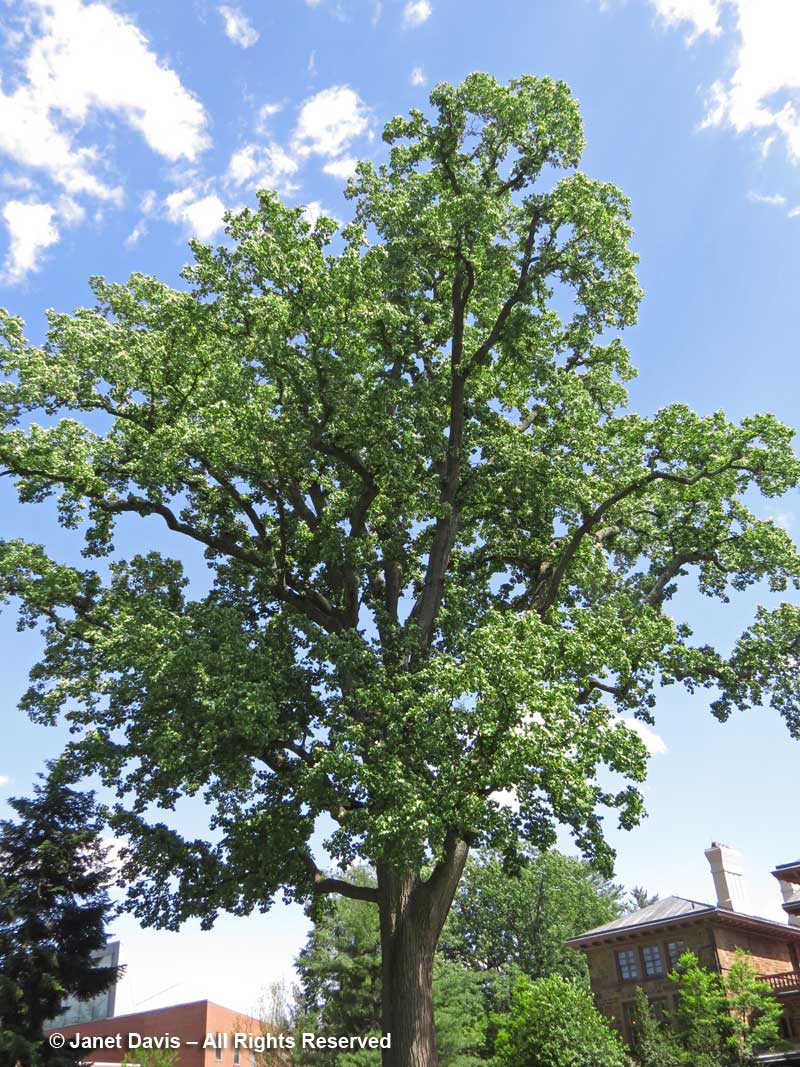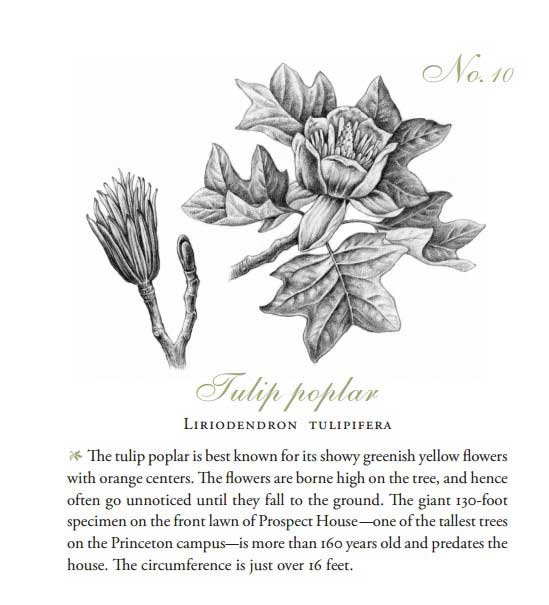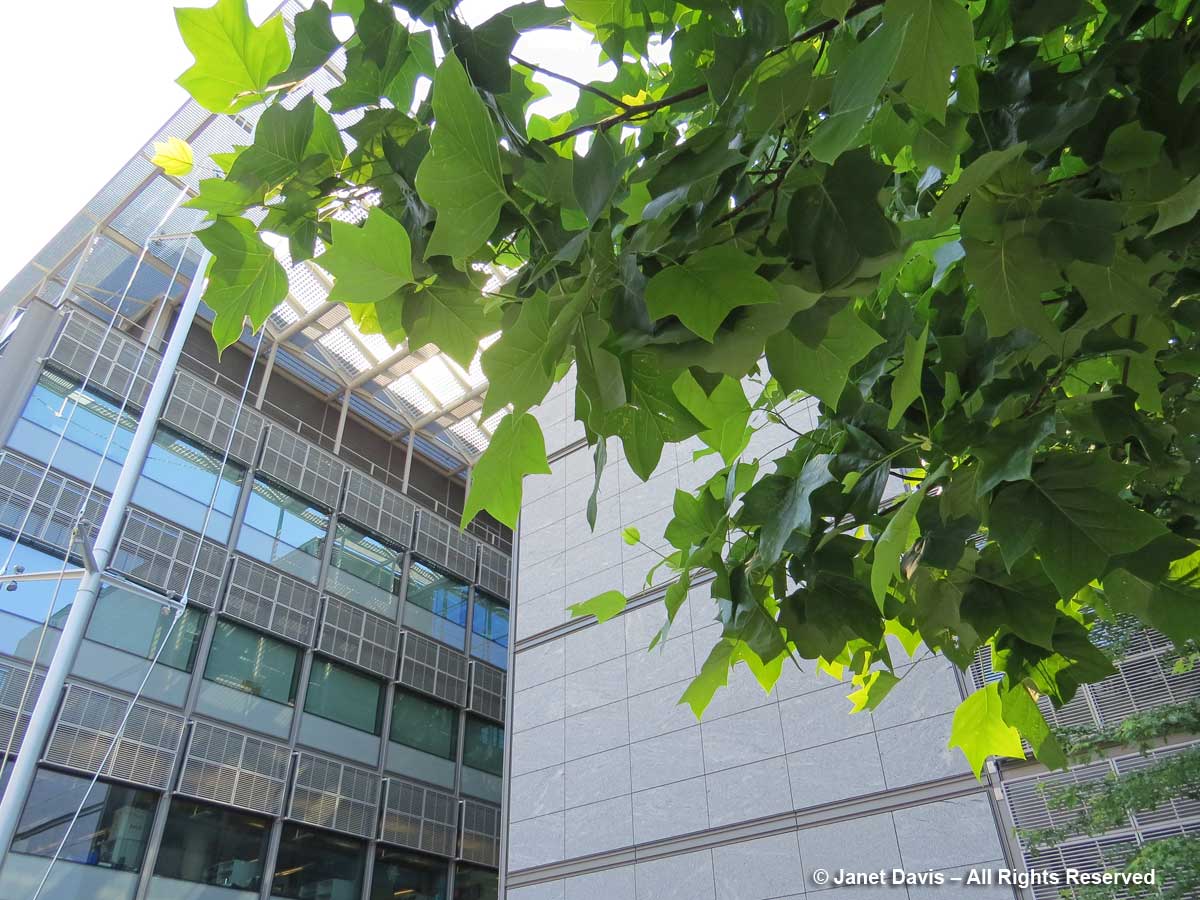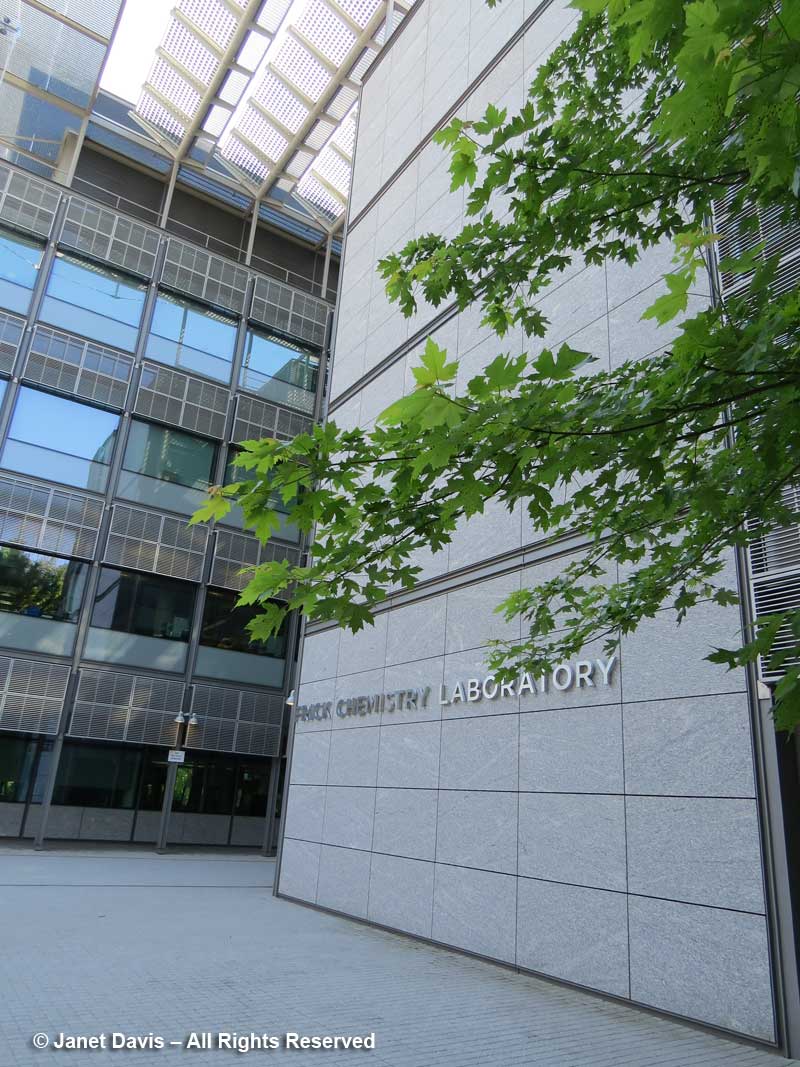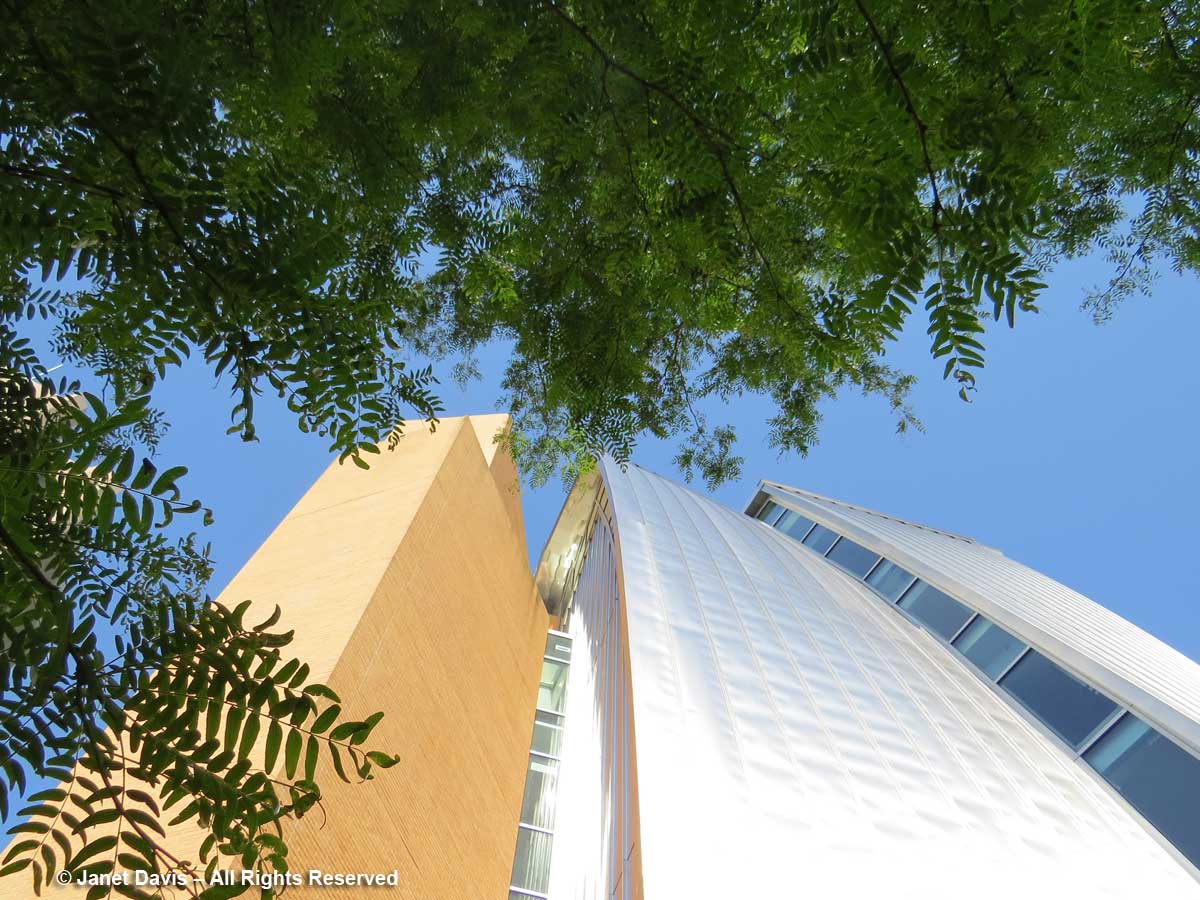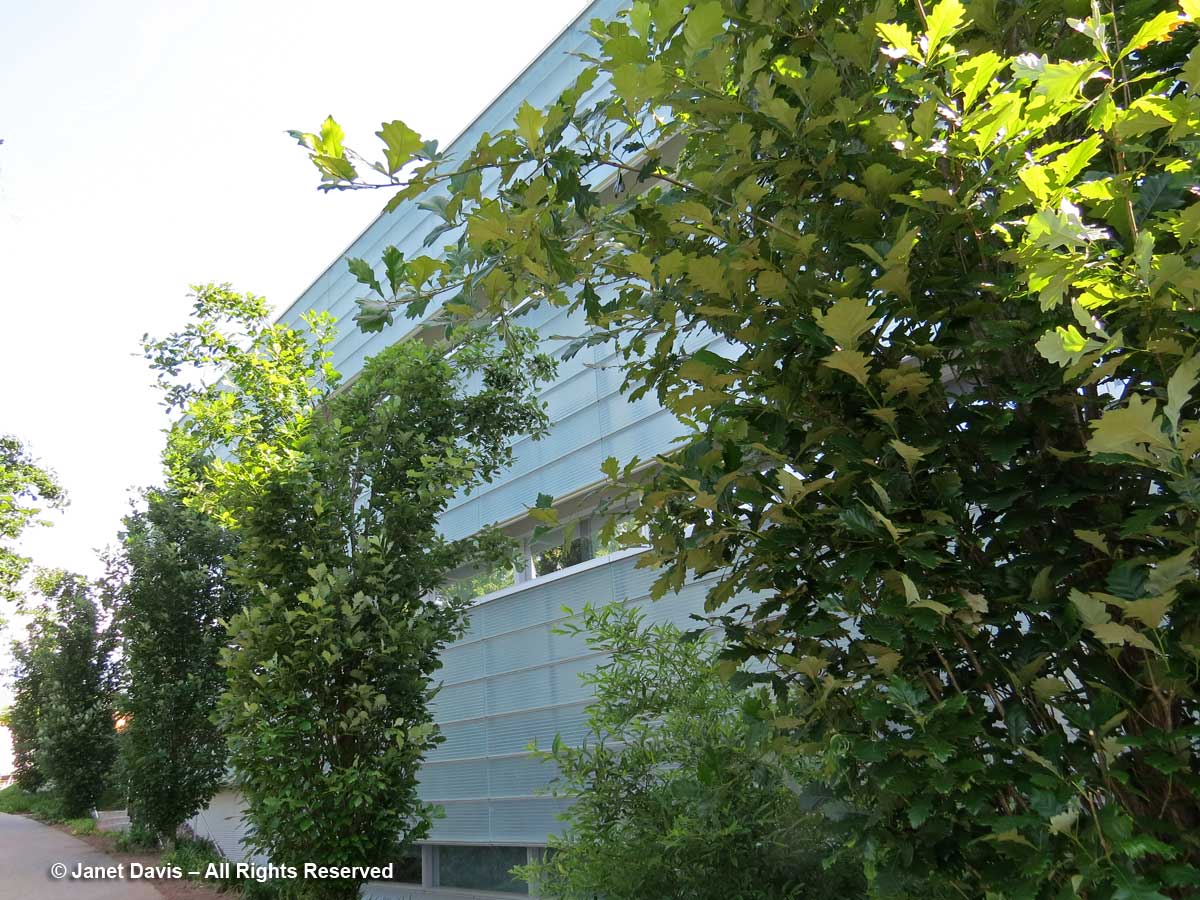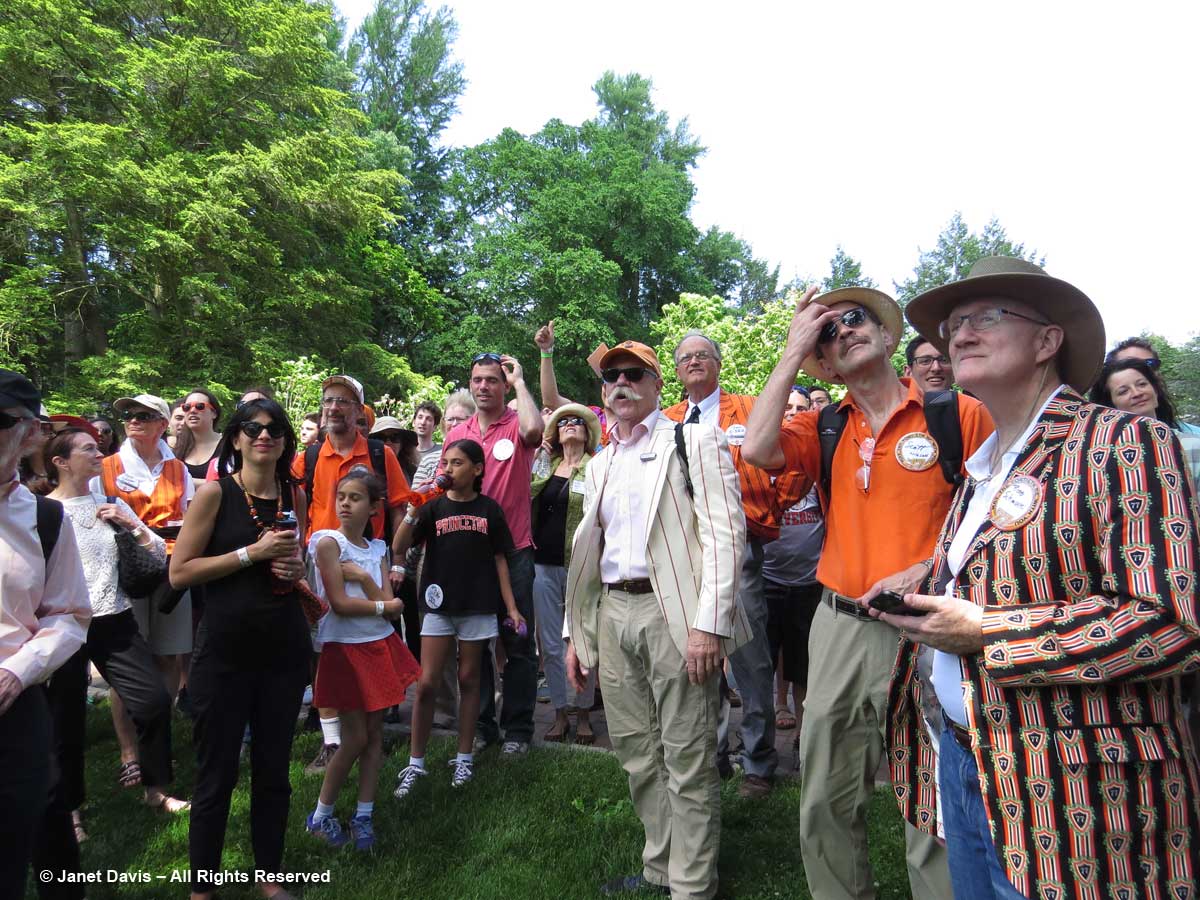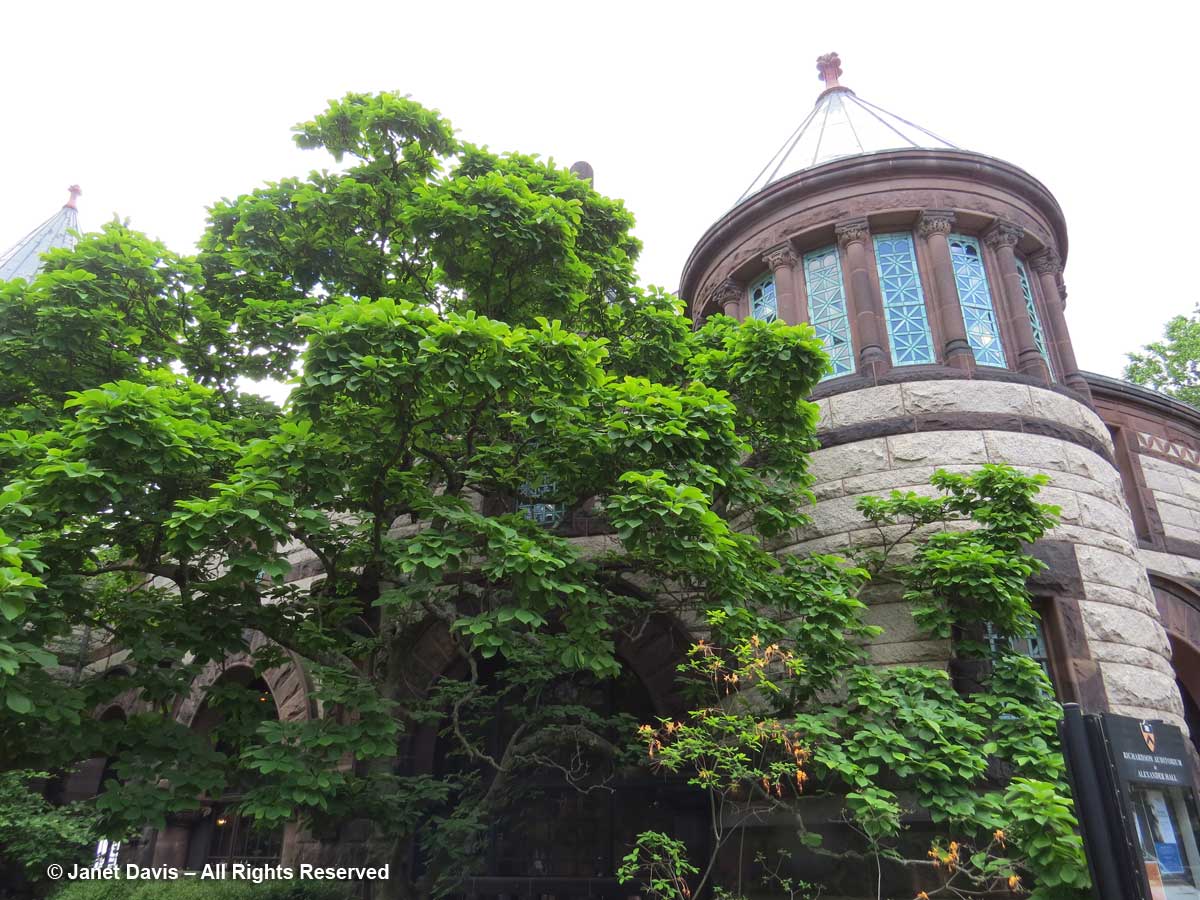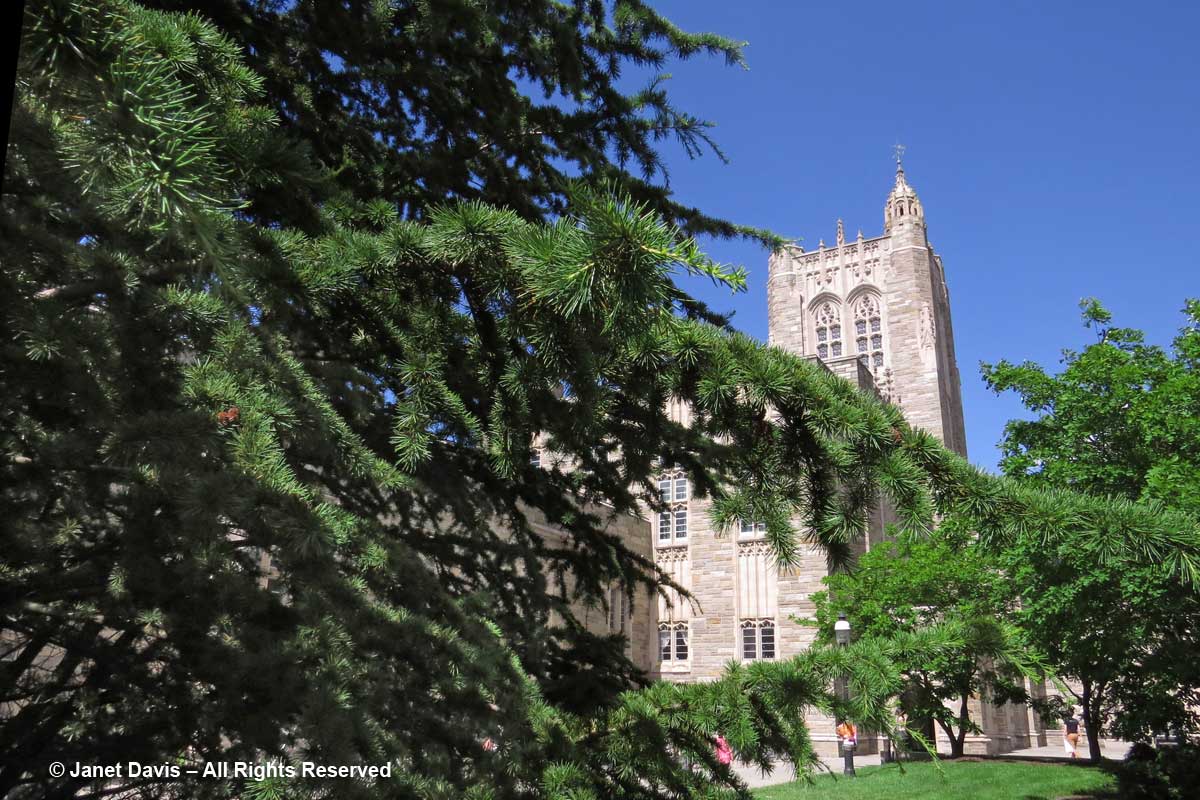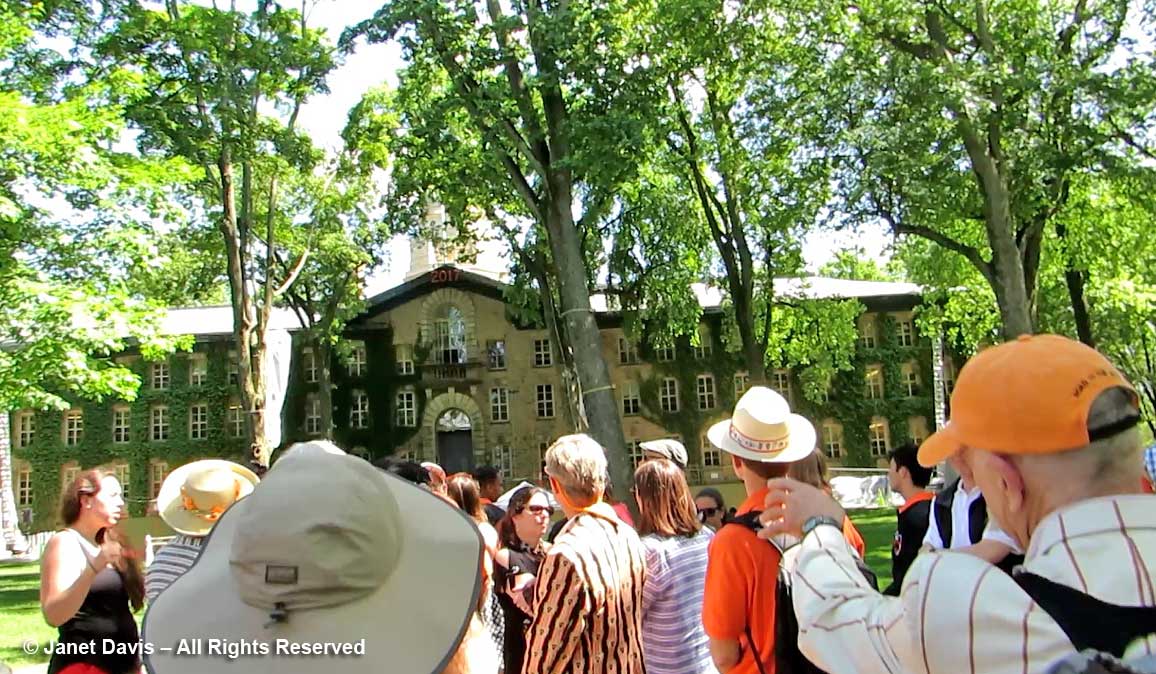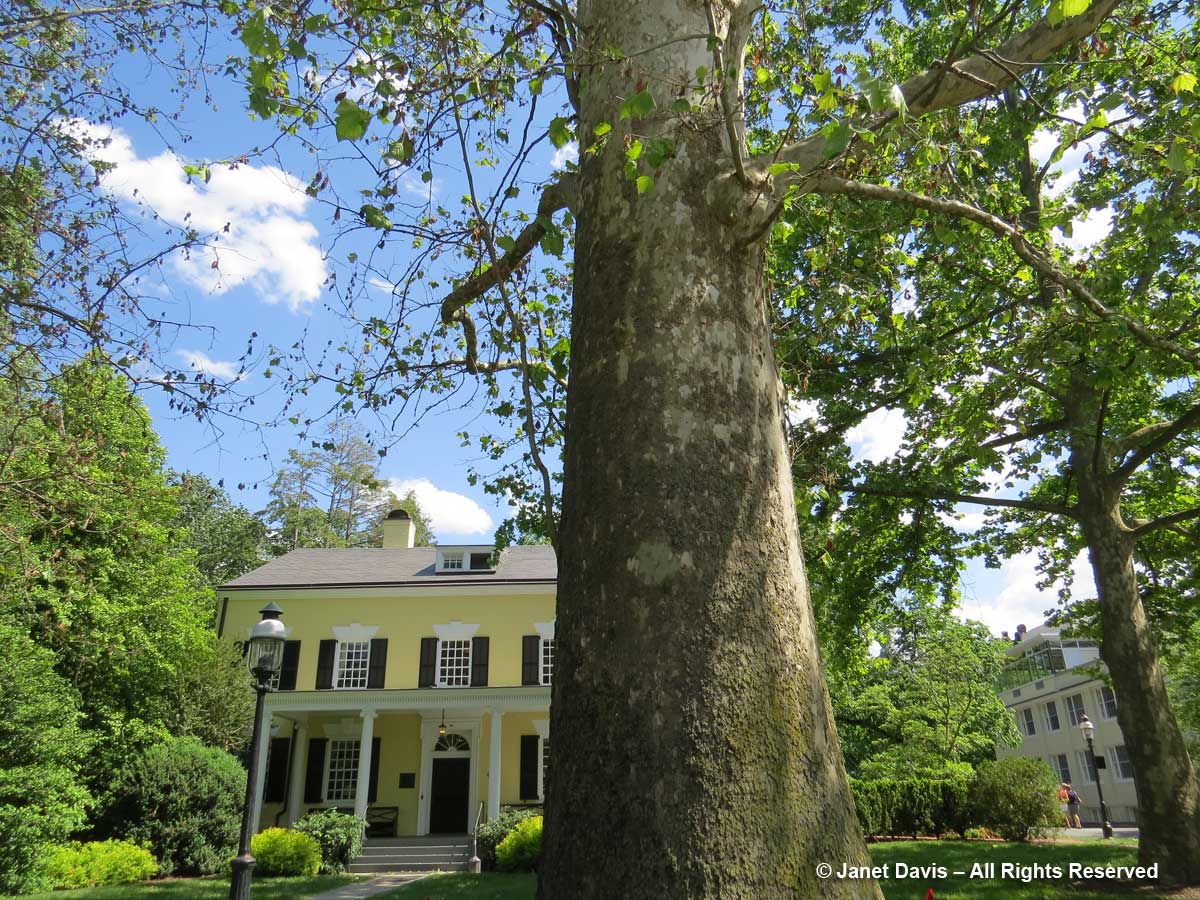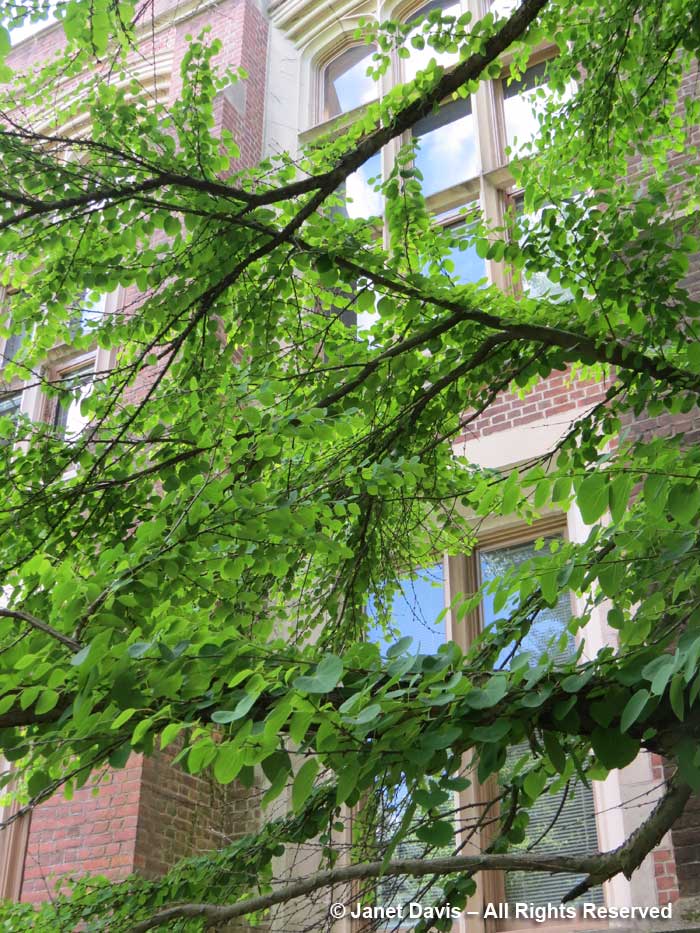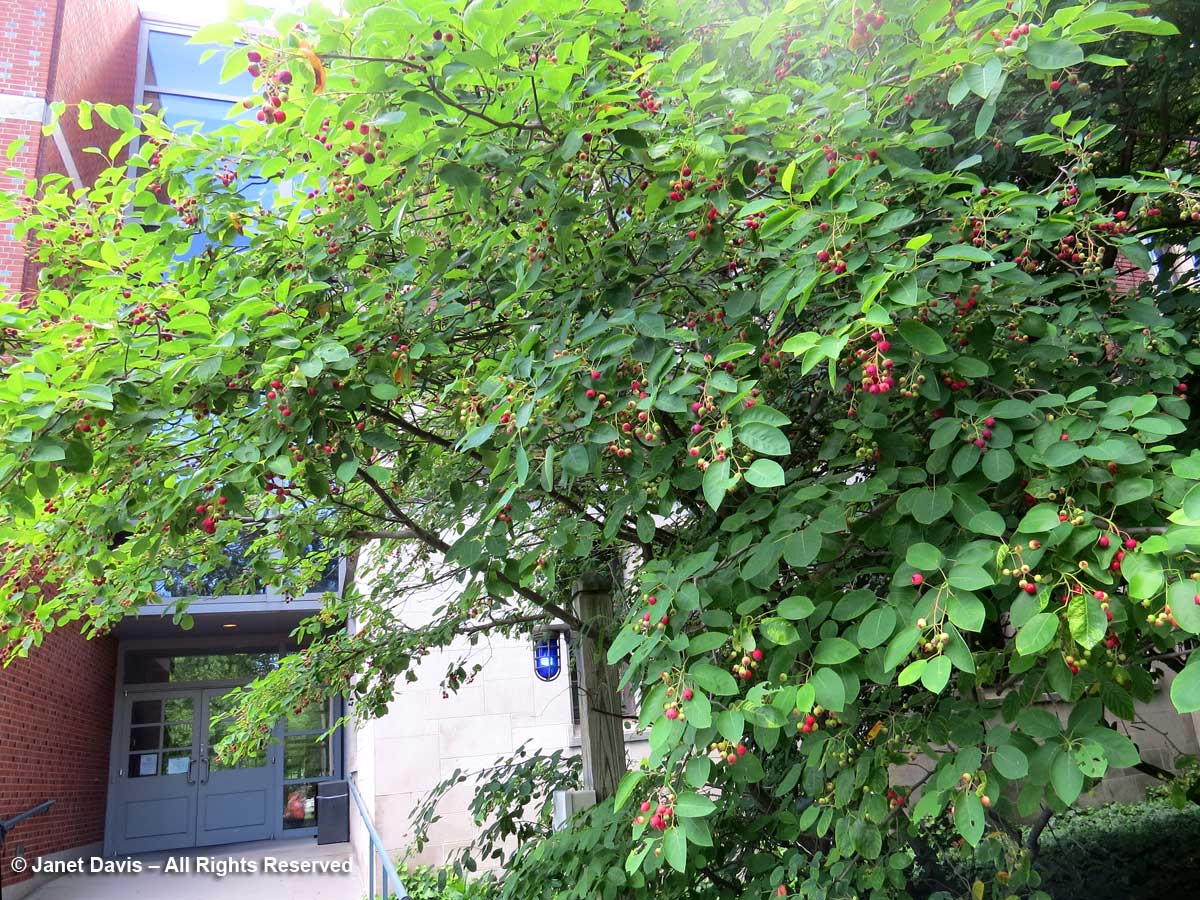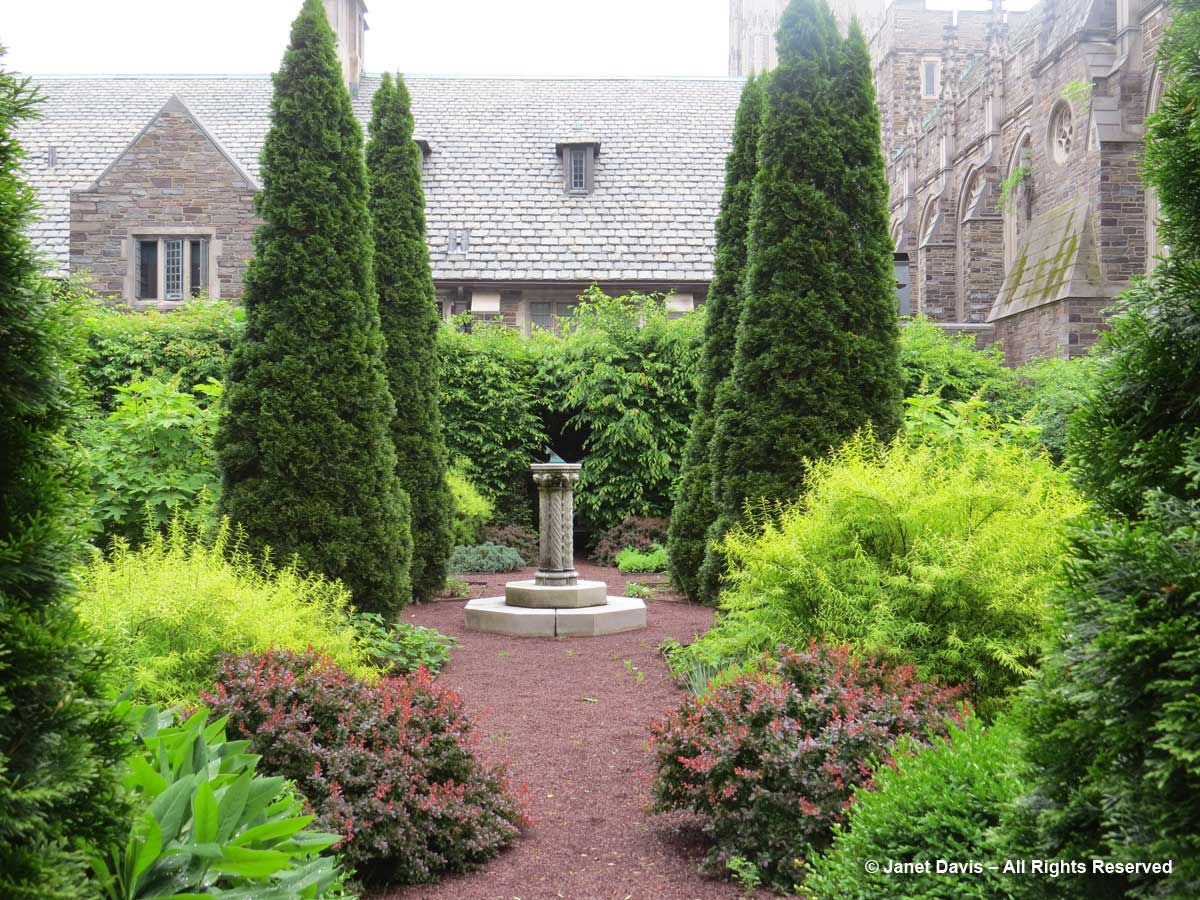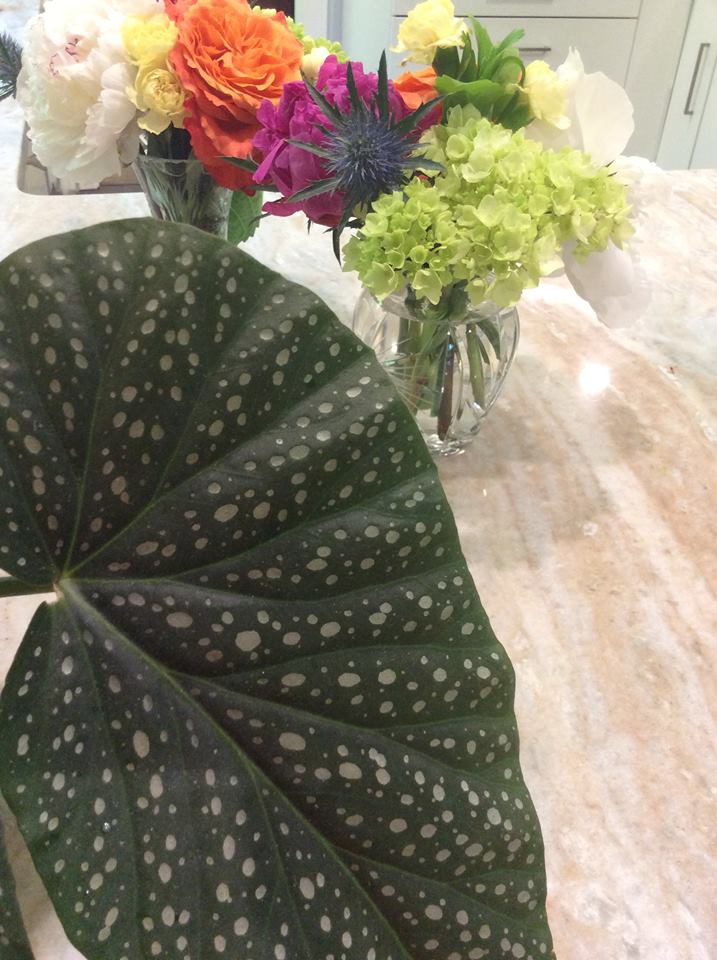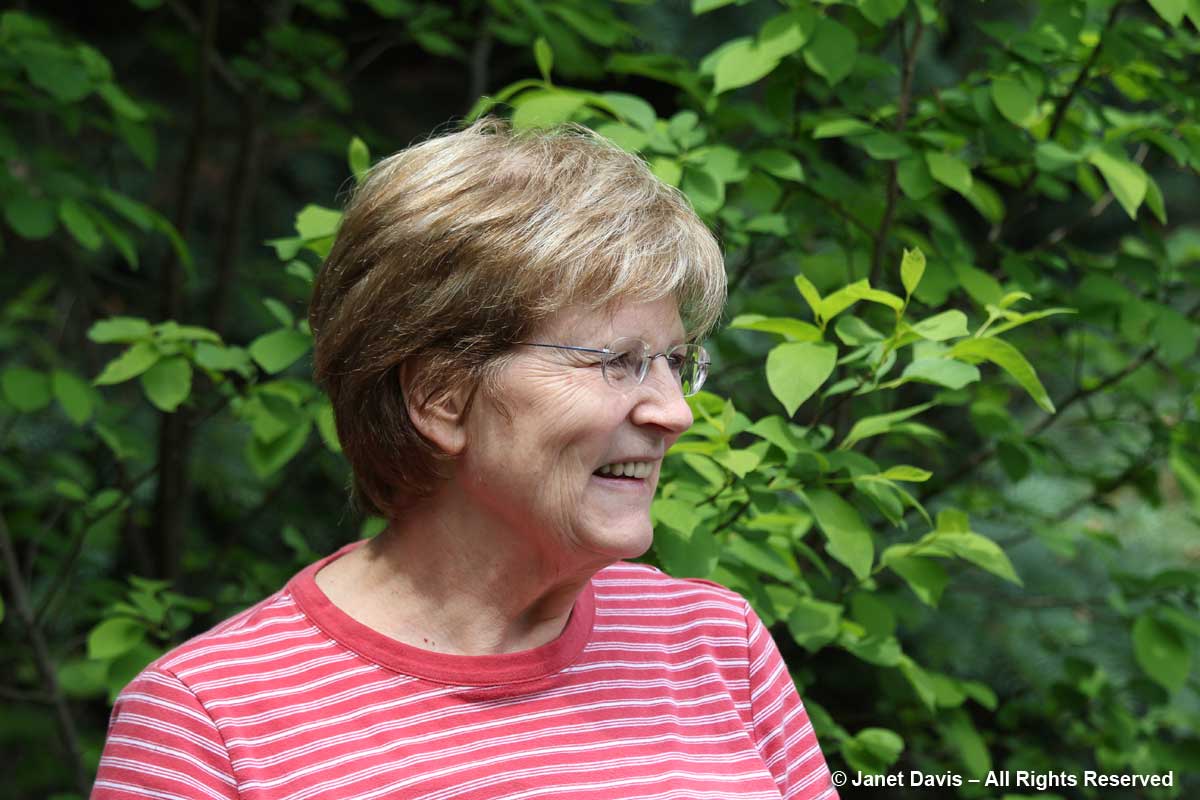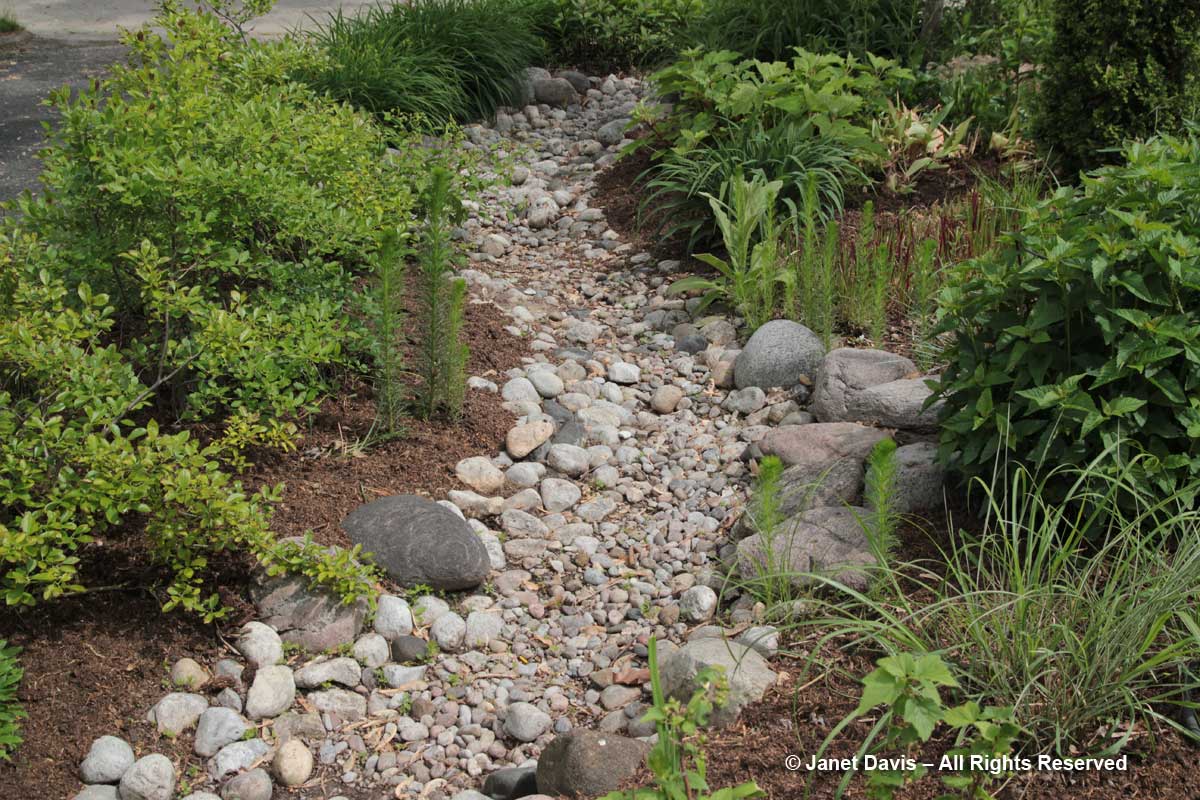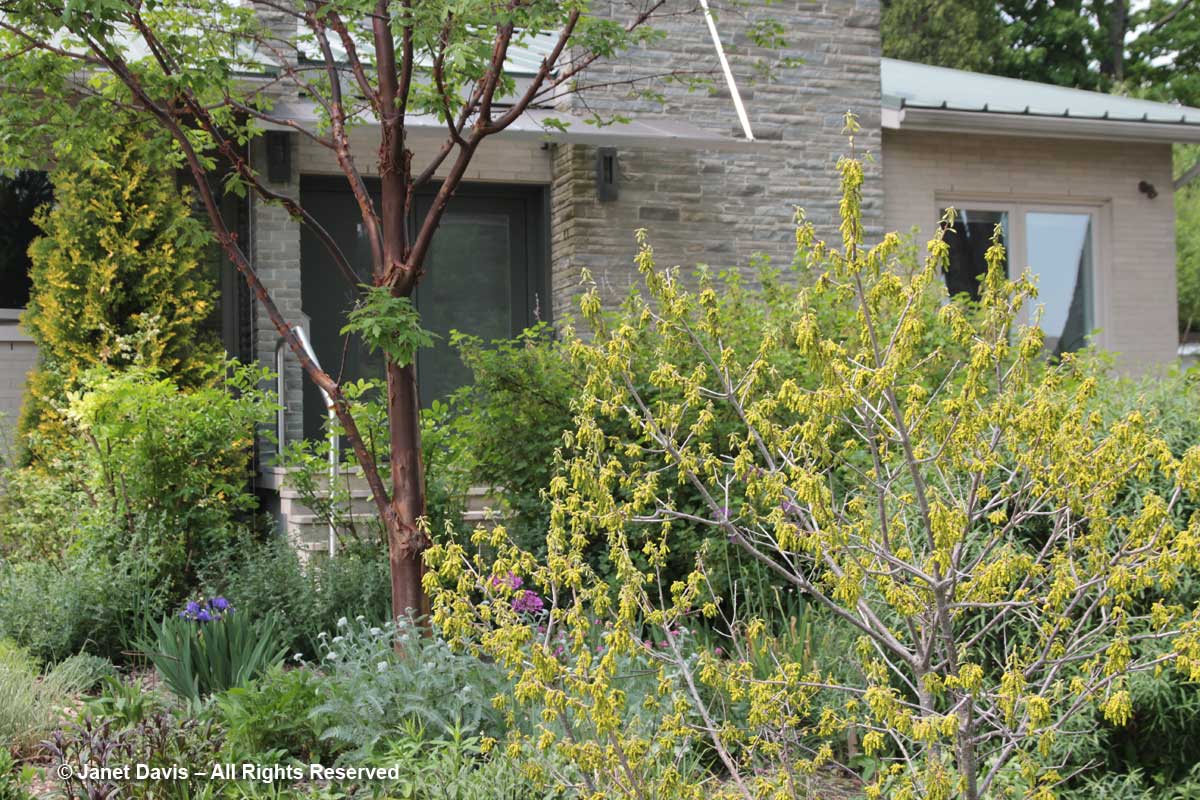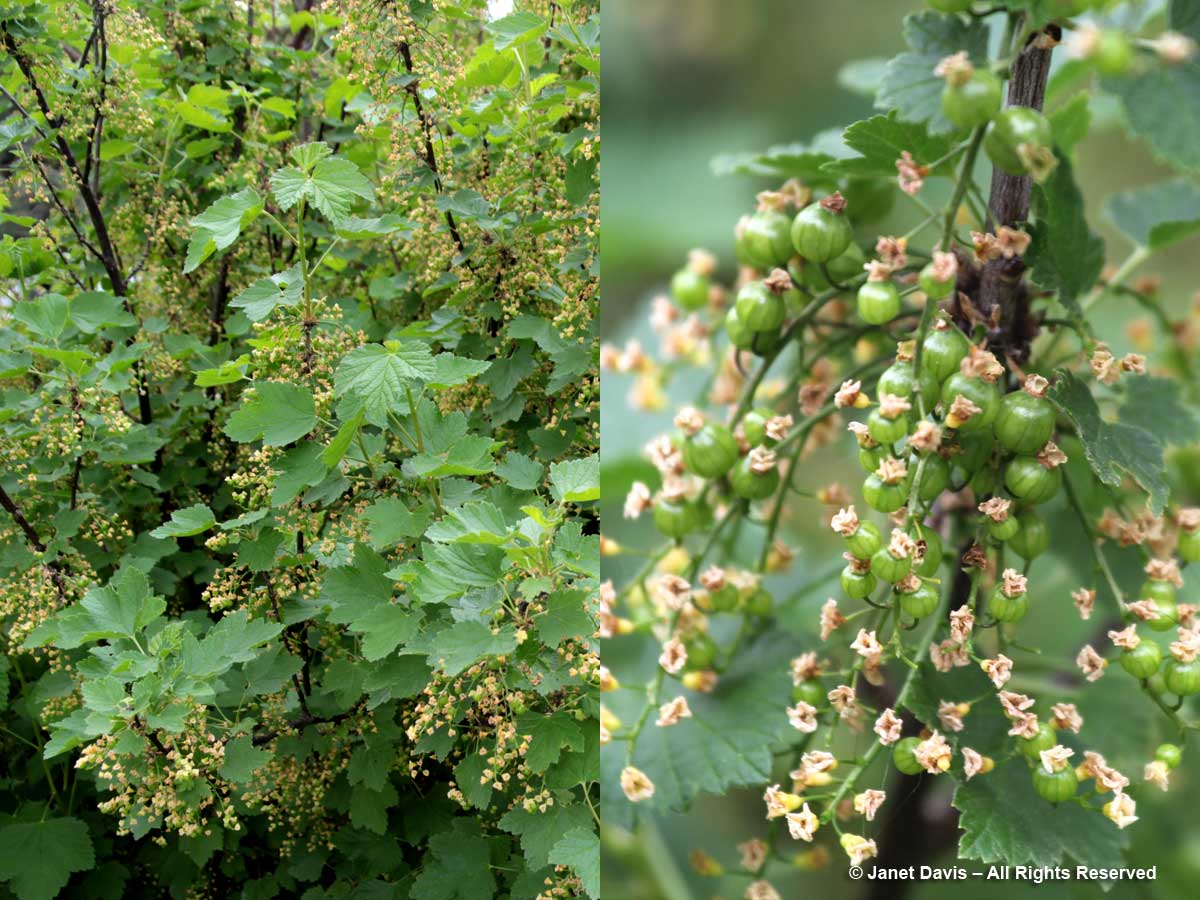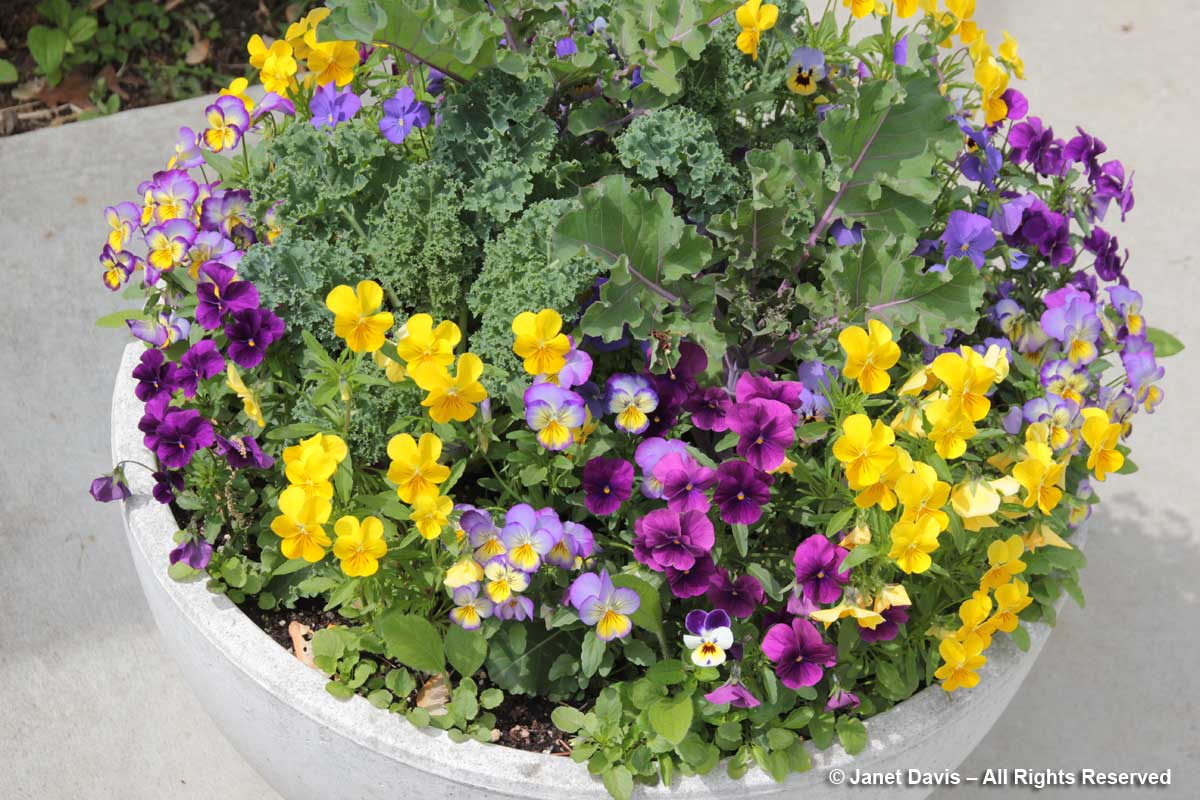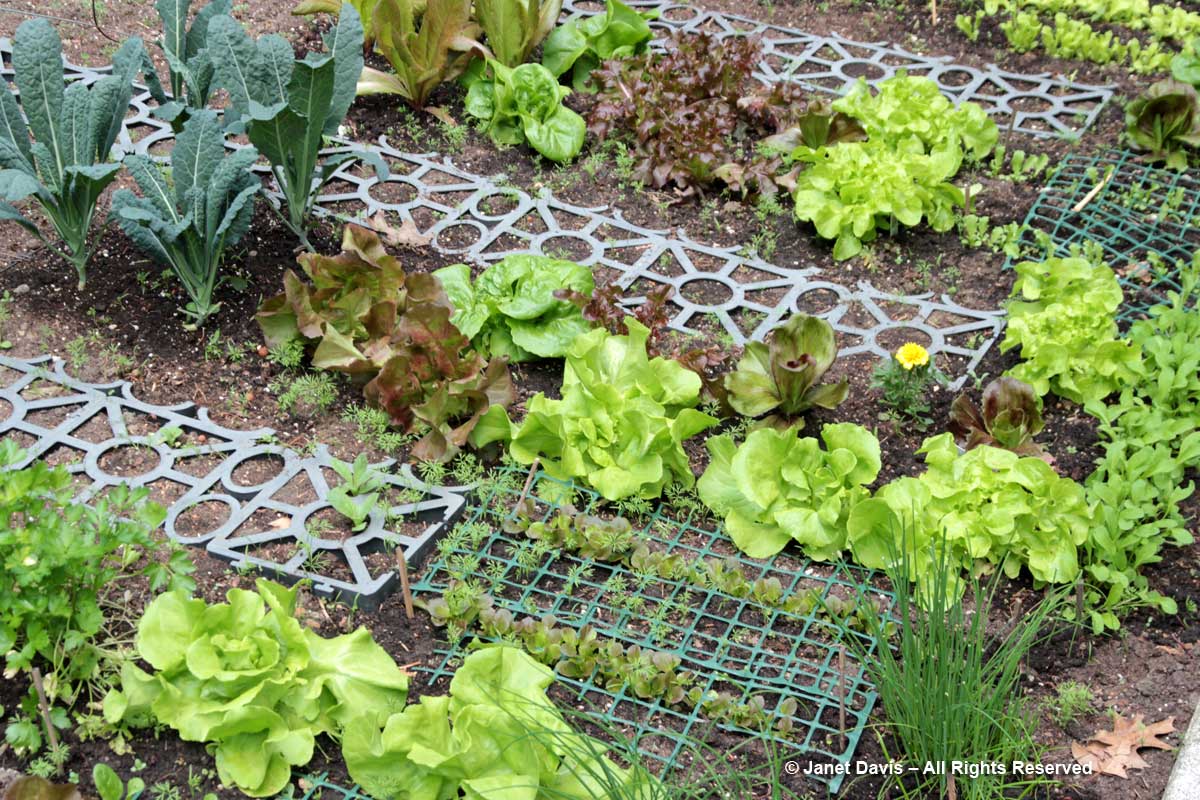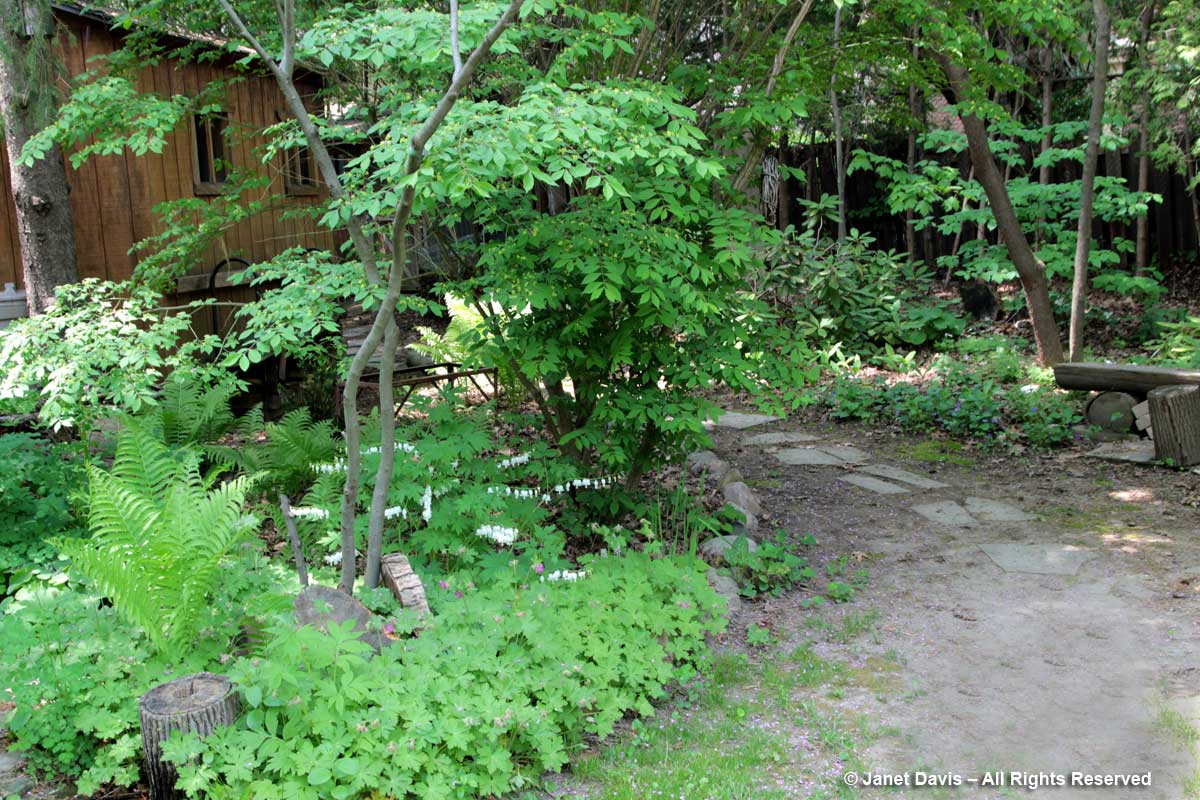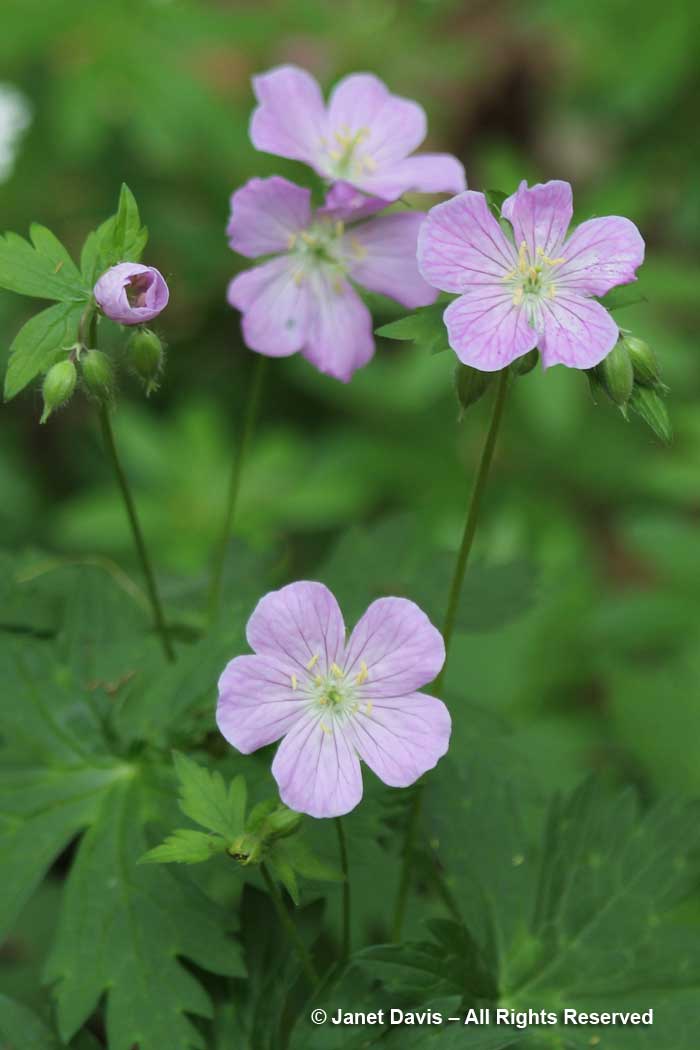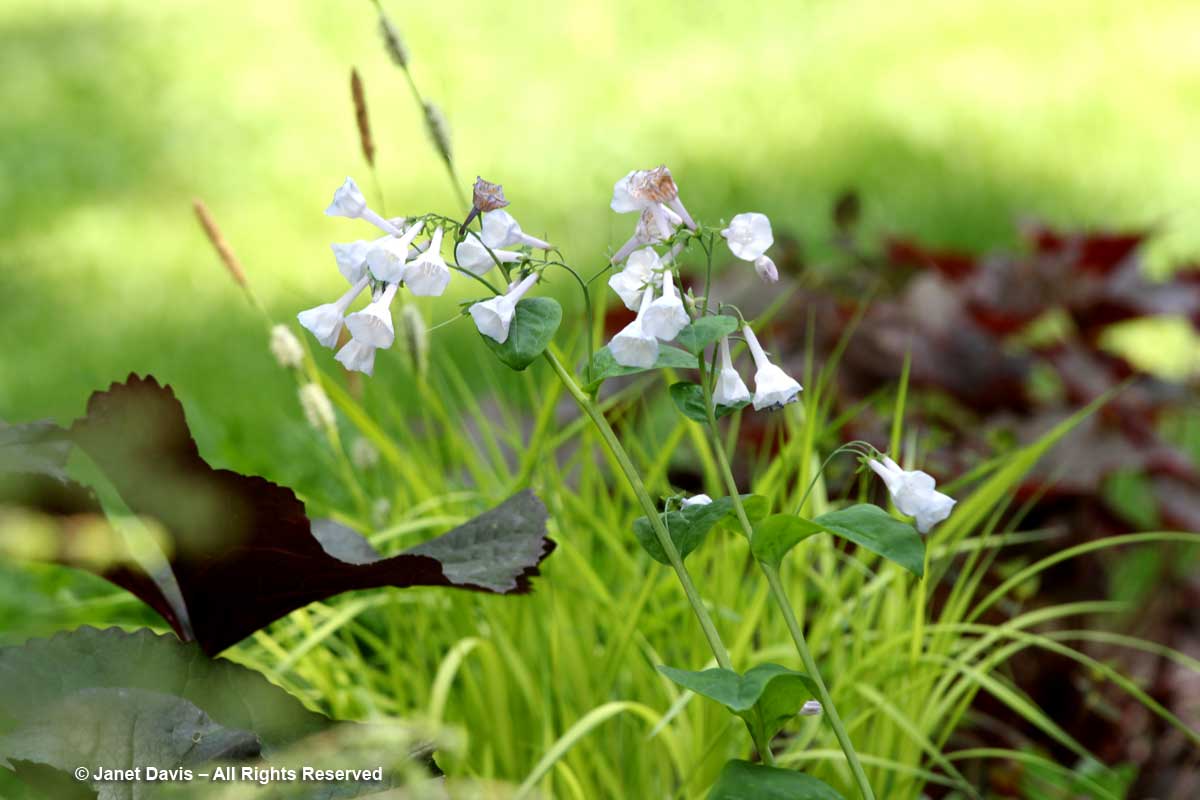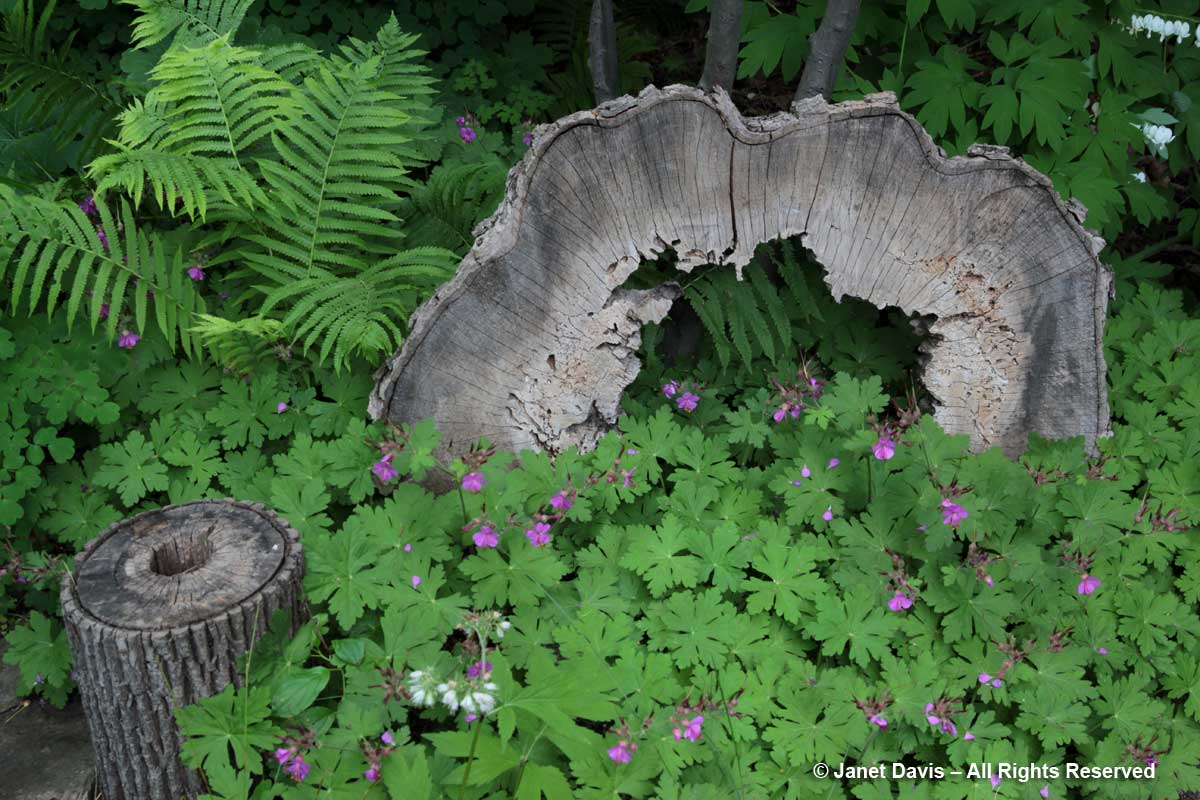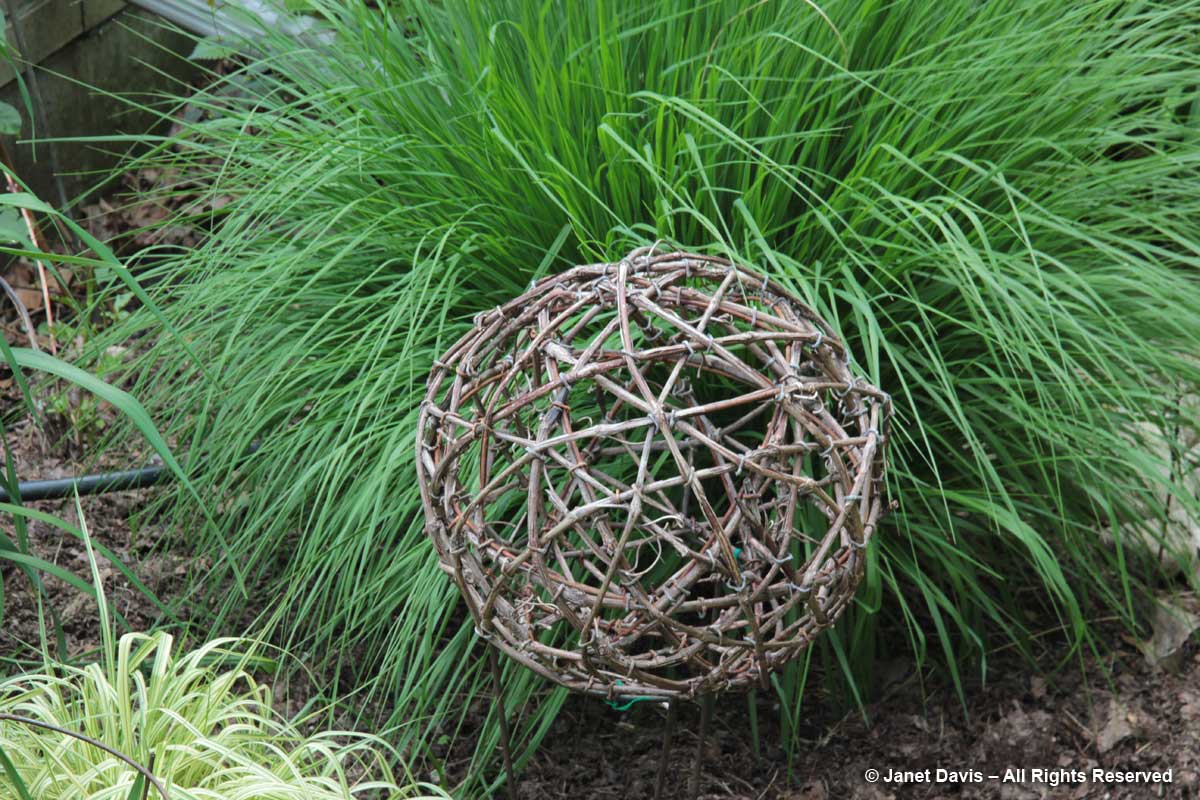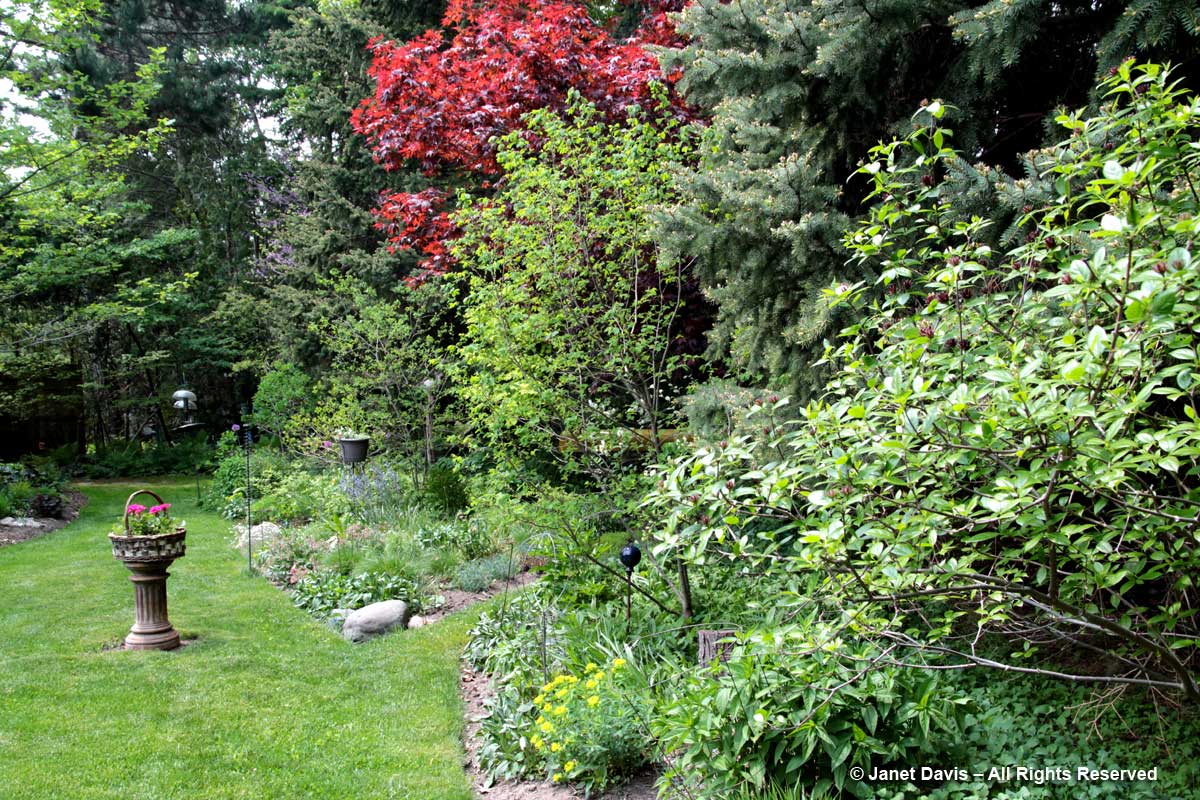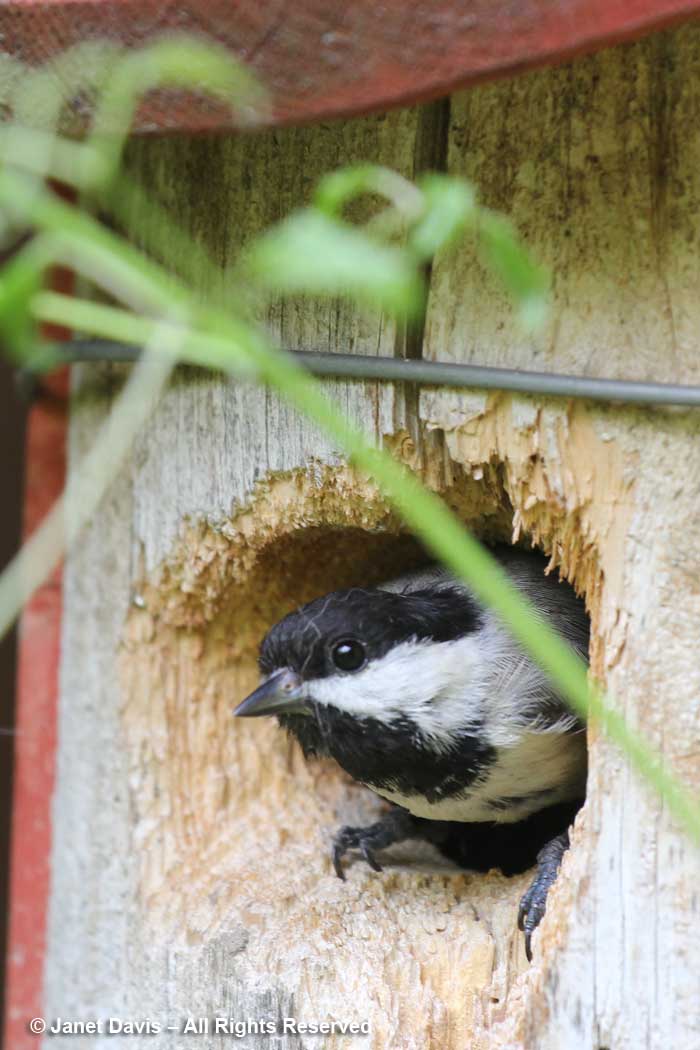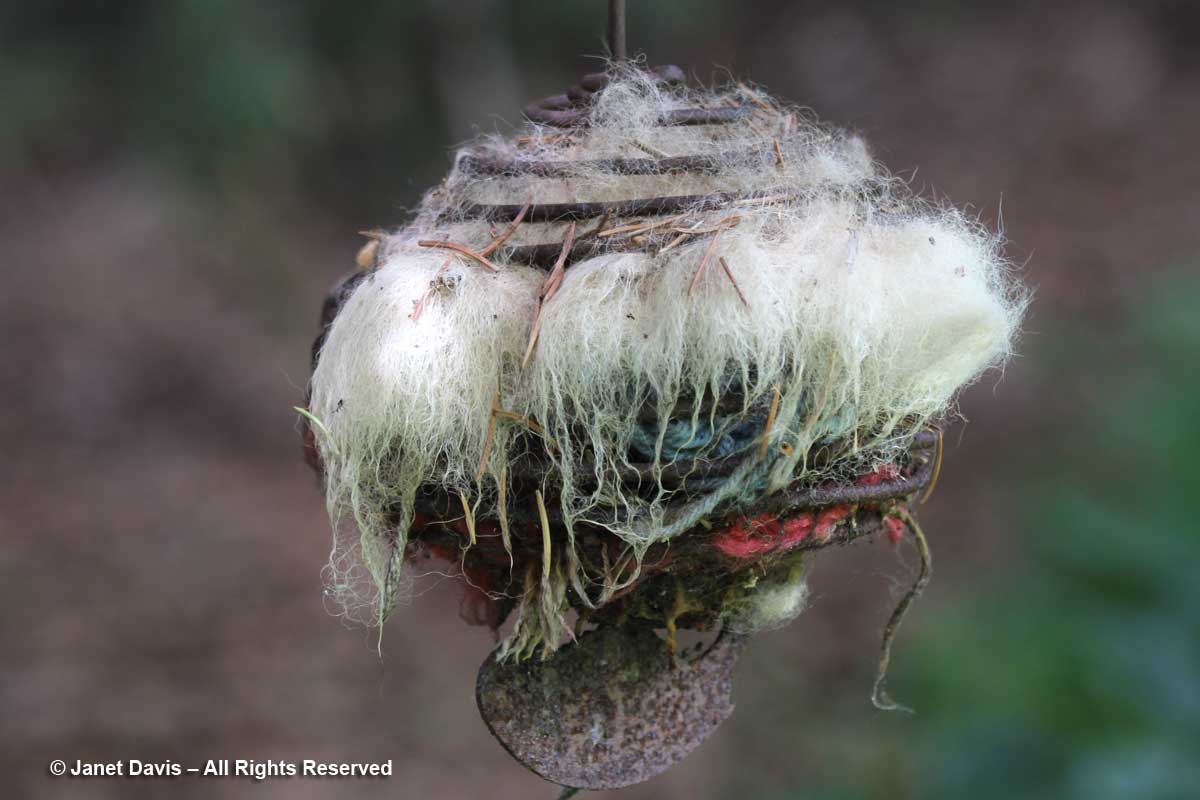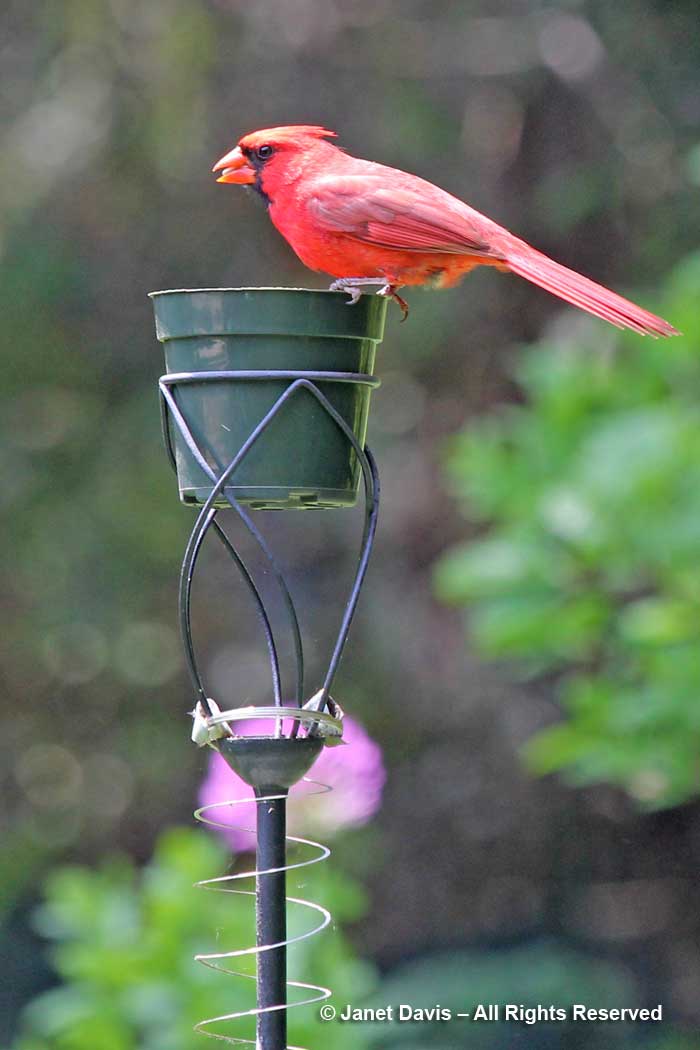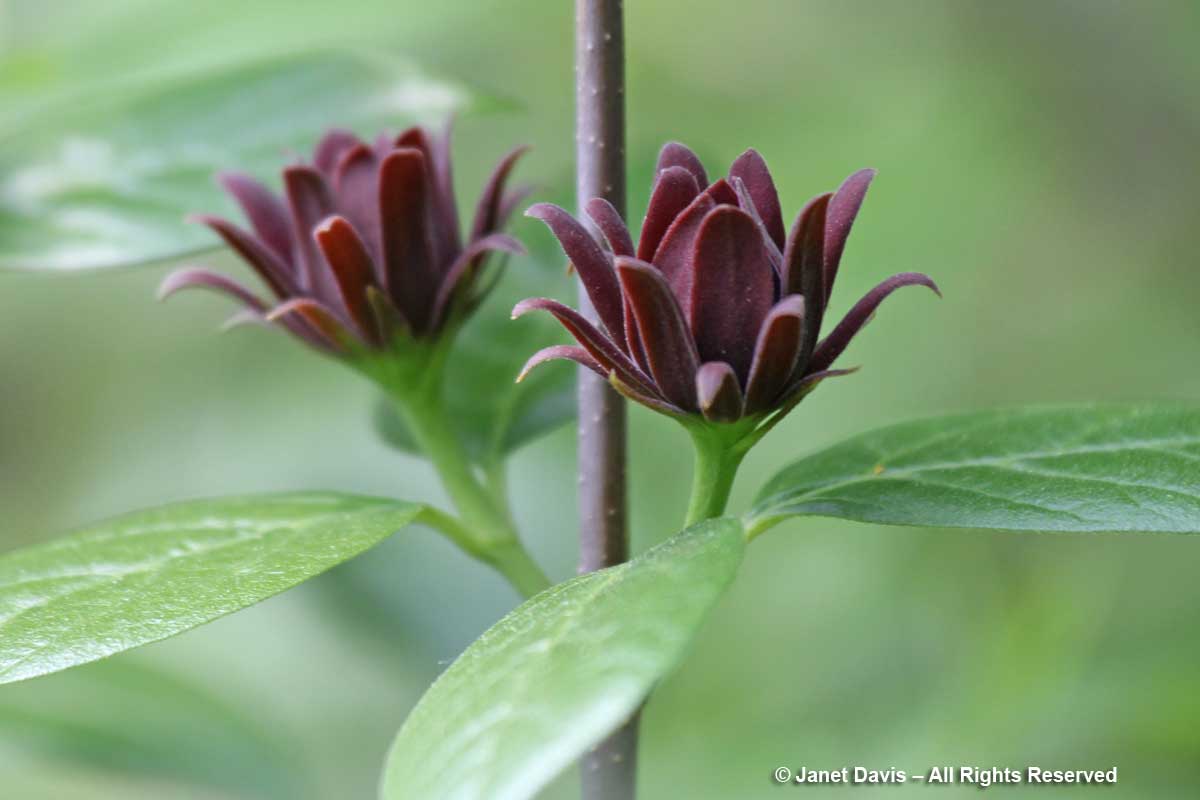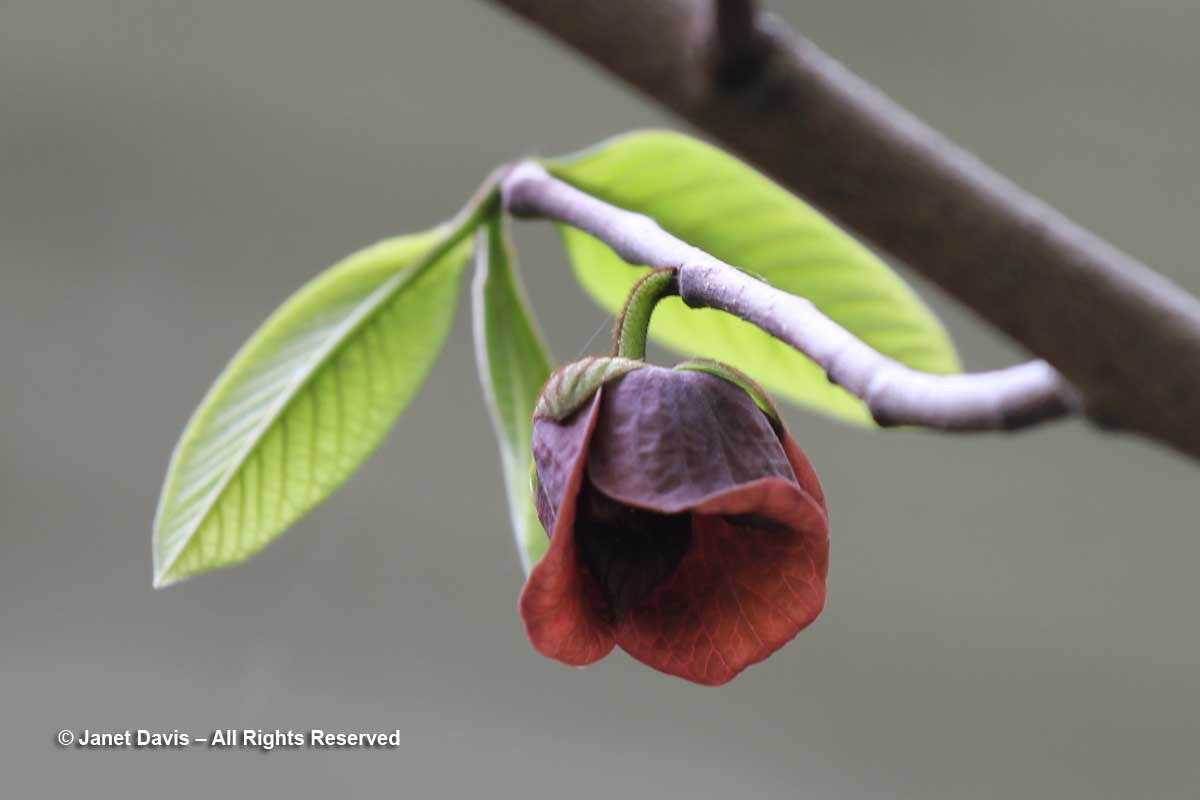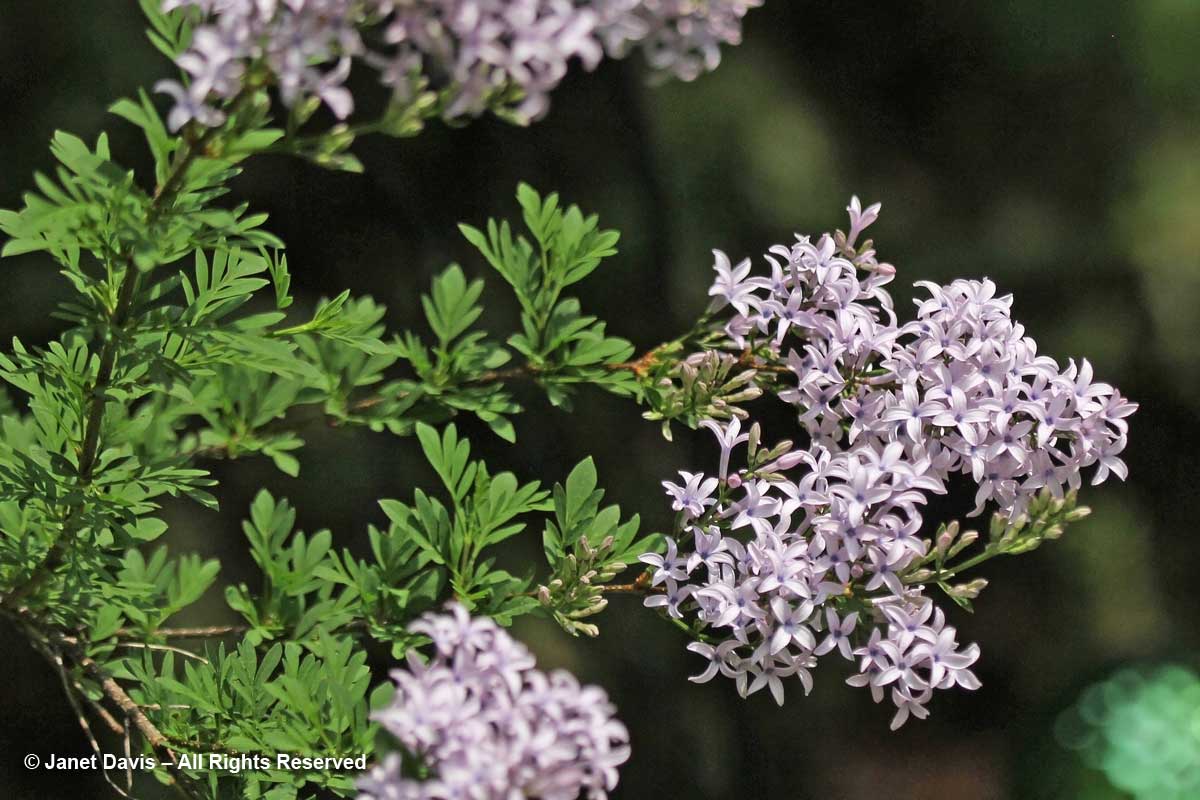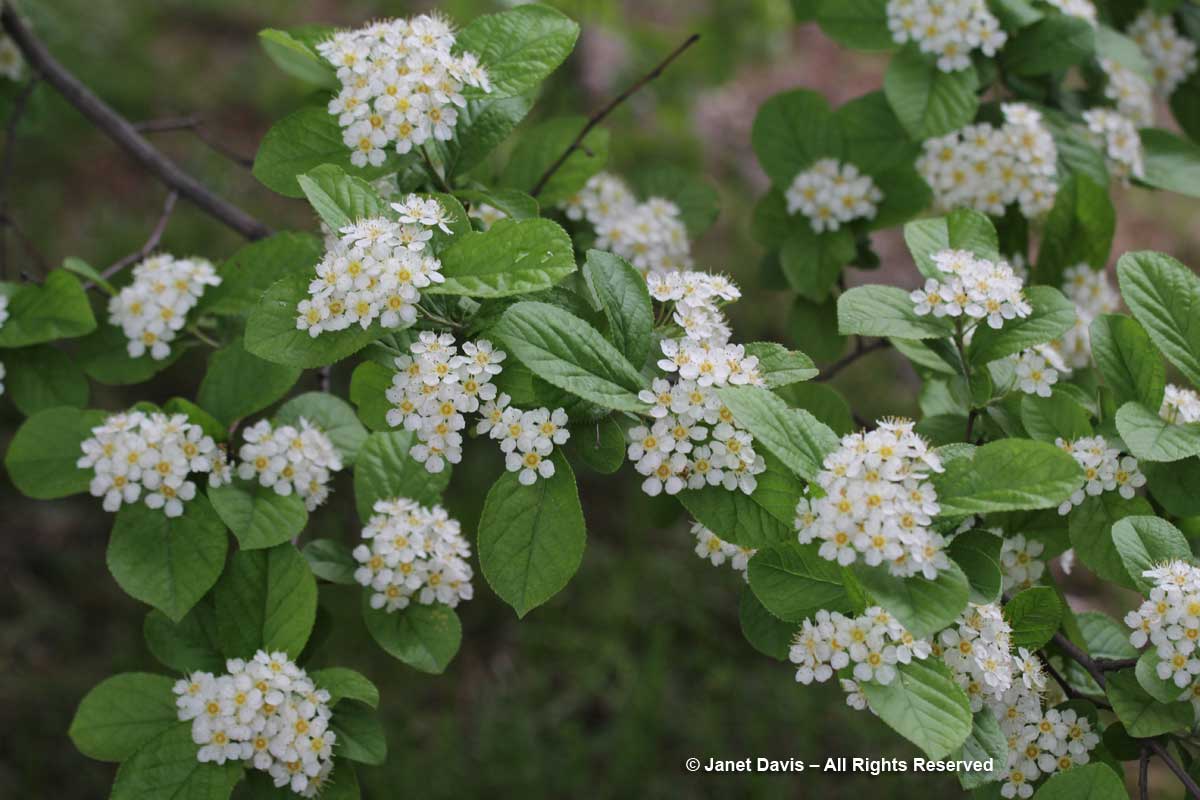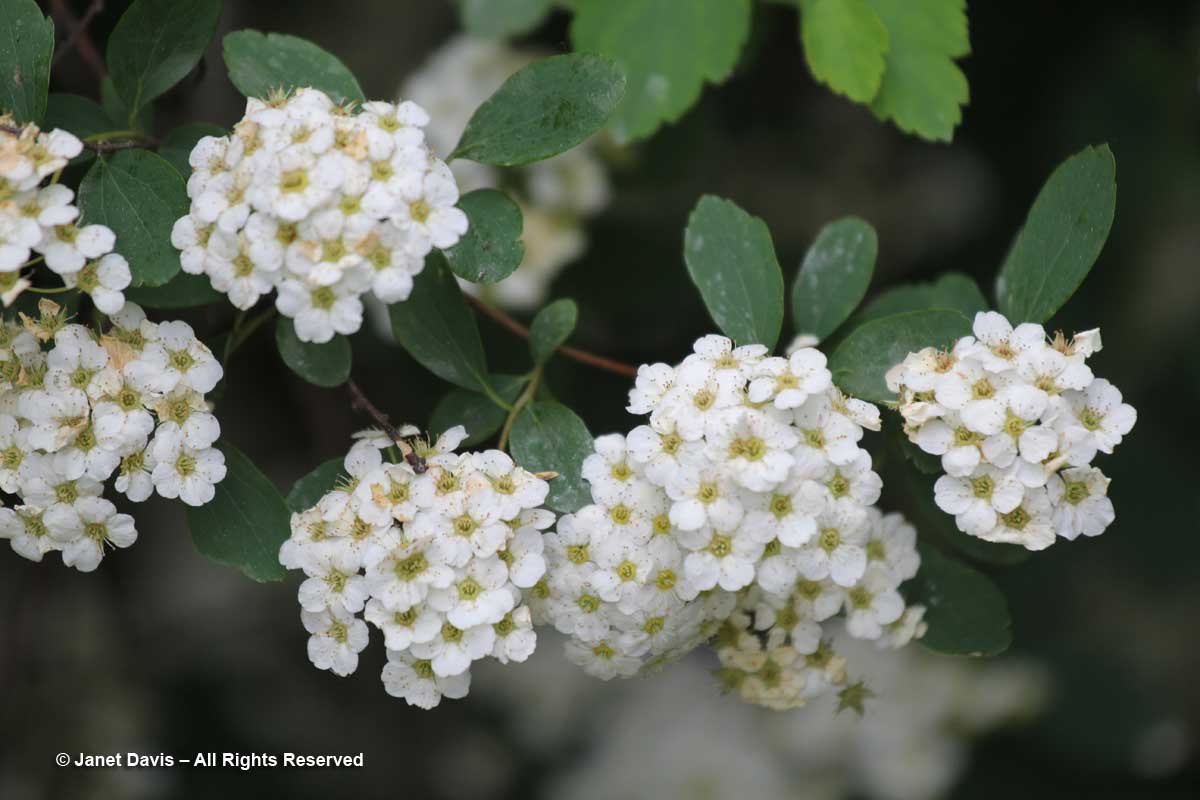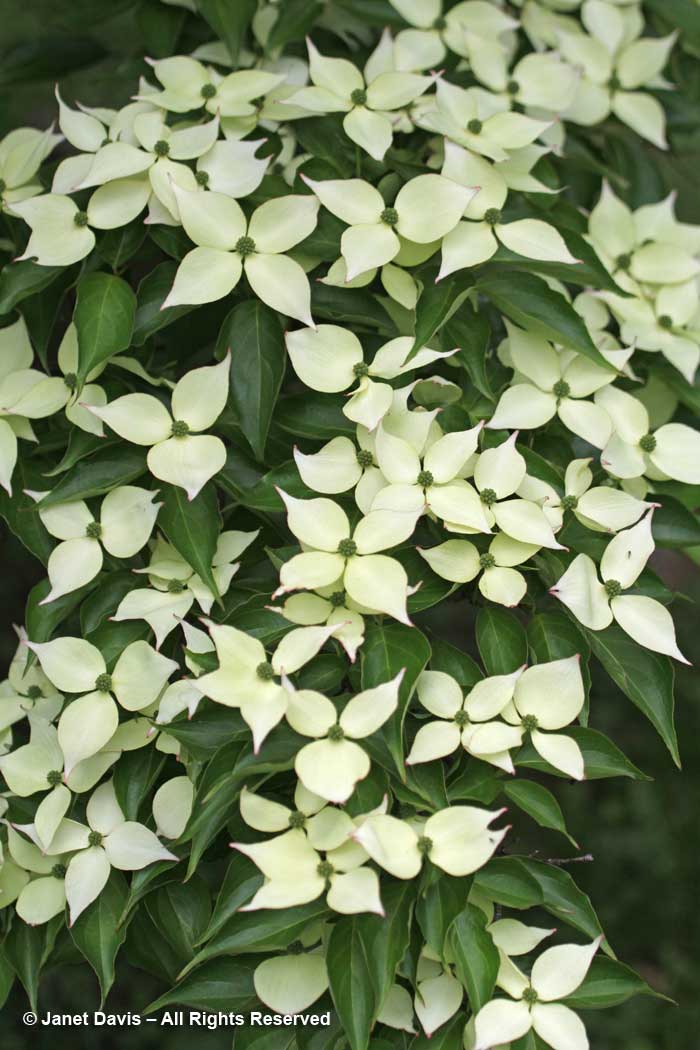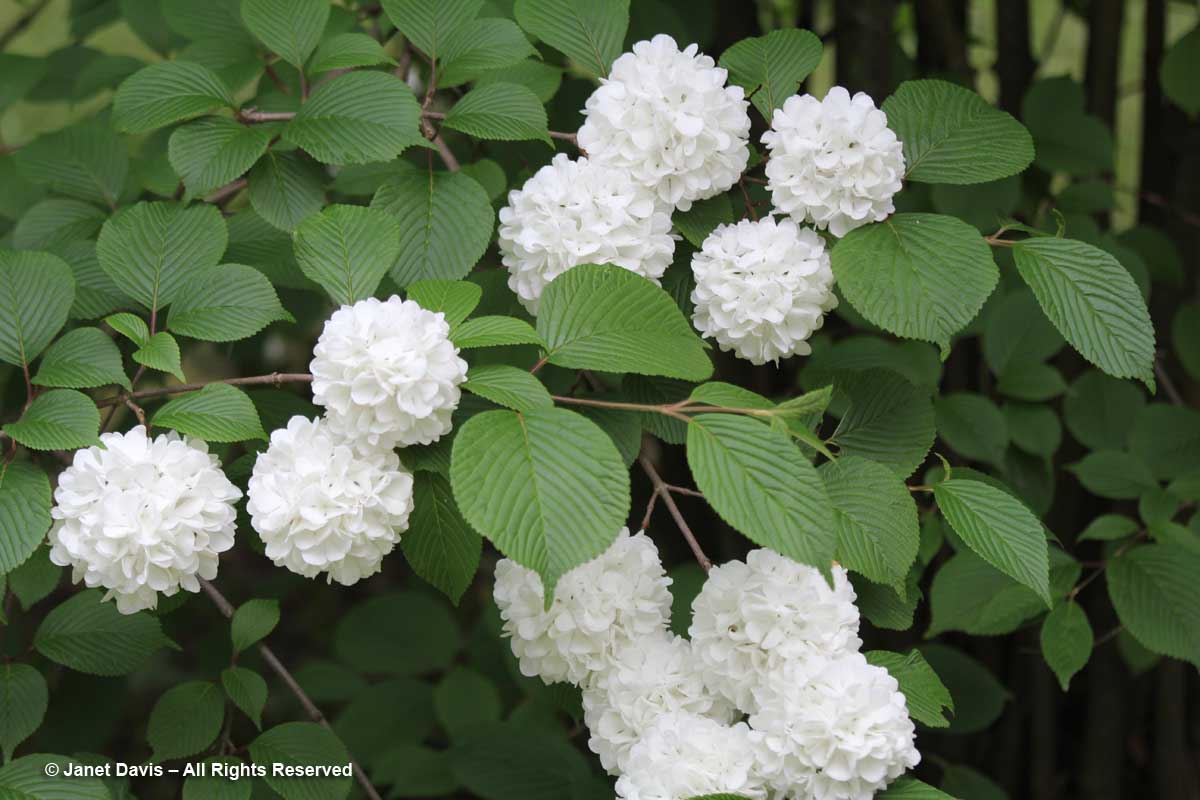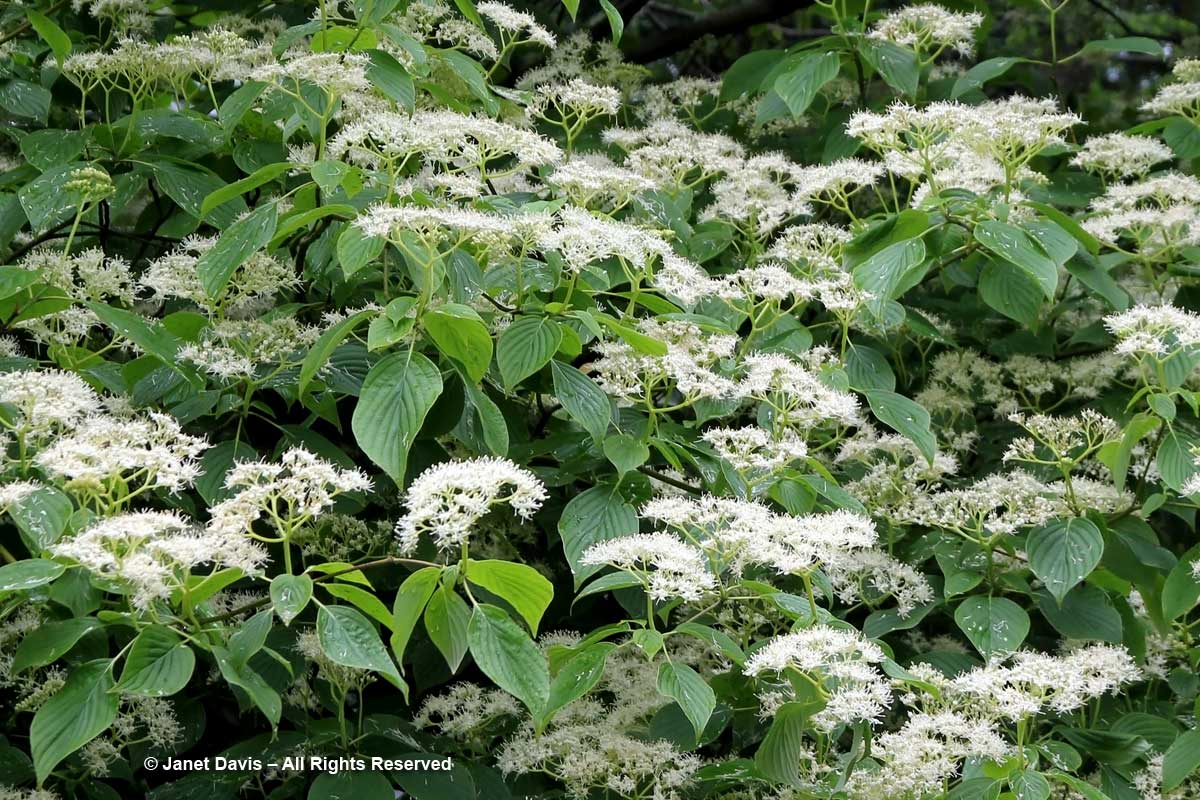I know, I know. That was a very bad pun. However, I was deliriously happy to be at Dumbarton Oaks, the former home of Georgetown DC doyenne Mildred Bliss, and especially to be in the spectacular gardens designed by Beatrix Farrand (1872-1959). But I was also almost delirious with the intense heat and humidity on a Saturday afternoon in mid-June so, having arrived a few minutes before the official garden opening time at 2 pm, I was delighted to sit for a moment on the cool stone steps leading into the house’s museum, and contemplate this delicious southern magnolia (M. grandiflora) blossom. Bliss, yes, bliss.
Finally, it was time to head into the R Street entrance to the grounds. In 1702, the land here was granted by Britain’s Queen Anne to a Scottish colonist named Colonel Ninian Beall, part of a 789-acre concession which he called the Rock of Dumbarton after a beloved place in Scotland. In 1801, an early version of the house was built by William Hammond Dorsey. In 1810, the Orangery was built by another resident in the Palladian style; in the 1860s, another resident attached it to the house. Six decades later, when diplomat Robert Woods Bliss and his wife (and step-sister), heiress Mildred Barnes Bliss purchased the property, this part of Georgetown was mostly farmland, but the house itself was there, albeit smaller. They renovated the Orangery, added to the house and began working with Beatrix Farrand on the gardens. In 1940, Mildred Bliss donated the house and estate to Harvard University, while continuing to live there. In time it became a research centre. And yes, though they do not form an oak woodland as they did when the property was named, there is still a beautiful oak on Dumbarton Oaks’s southern lawn.
When Beatrix Farrand wrote about the south facade in her plant book for Dumbarton Oaks, she was authoritative in assessing the relationship of the house and its foundation plantings: “The planting on the south side of the house has been chosen from material with foliage of small scale in order to give apparent size and importance to the building. Large as the building is, a study of its scale will show the detail itself is small. As a general principle, approximately one-third of the spring line of the building should be unplanted, as the effect is unfortunate where a building seems to be totally submerged beneath line of plants that muffle the architectural lines and make the building appear to rise from a mass of shrubs rather than from the ground.”
You can explore Dumbarton Oaks’ gardens online, based on the garden plan below, or you can just take a fast, chatty stroll through its 16 acres in my little blog here.
Let’s start adjacent to the house in the 1810 Orangery, which is lovely and cool……
….. with mossy walls striated with shadows from the supports of the glass roof. That creeping fig vine (Ficus pumila) festooned over the walls and arched windows is more than 150 years old, its exuberance reined in by Beatrix Farrand. In winter, the Orangery is used to store tender plants such as oleander, gardenia and citrus.
By the way, I’ve visited Dumbarton Oaks twice in early April, several years ago, and this is the large magnolia that blooms outside the Orangery. I included this photo (a scanned slide from 2003) because of Beatrix Farrand’s reference to it in her plant book for the gardens. “Immediately south of the orangery, a magnificent old tree of Magnolia conspicua denudata has been christened “The Bride” as when it is in full bloom in early April its loveliness is an enchantment. The tree should be preserved as long as it can be made to thrive and bloom well, and when its days are over it should be replaced by another as nearly like it as possible, as the sight of the white tree from the R Street gateway and looked down upon from the orangery is one of the real horticultural events of the Dumbarton season.”
Now it’s time to head out into the early summer heat and begin our own tour in the Green Garden, the highest point on the site (and once the site of the barn, which the Blisses removed). I stop in front of a stone plaque to Beatrix Farrand’s memory.
Its inscription….May they see their dreams springing to life under the spreading boughs/May lucky stars bring them every continuous good
The plaque celebrates the friendship between Mildred Bliss, below left, and her ‘landscape gardener’, Beatrix Jones Farrand, right, whom she hired to design the gardens in 1920 and who stayed involved with the estate until retiring in 1940.
Born in 1872 to wealthy New Yorkers who summered at their estate, Reef Point at Bar Harbor in Mount Desert, Maine, Beatrix Jones began her training in landscape gardening at the age of 20 under Charles Sprague Sargent at Boston’s Arnold Arboretum. At 23, she launched her design practice in her mother’s New York brownstone; at 26, she was the only woman among the 11 founders of the American Society of Landscape Architects (ASLA). While working on Yale University’s landscape, she met historian Max Farrand, who was chair of the university’s history department; they married in 1913 and she became Beatrix Jones Farrand. (In my last blog on the trees and gardens of Princeton University, I wrote about her beautiful landscape (1914-15) for the Princeton University Graduate College.) She was also a friend of novelist Henry James, whose pet name for her was “Trix”. As for the Blisses, there was also a family connection: while serving as secretary of the United States Embassy in Paris during the beginning of WWI, Robert Bliss and his wife Mildred socialized with Beatrix’s aunt, the novelist Edith Jones Wharton.
Looking over the stone wall beside the plaque, we can see the lovely Swimming Pool and Loggia below. This area was a horse stable yard and manure pit when the Blisses bought Dumbarton Oaks. Architect Frederick Brooke, who had done renovations on the house, transformed them into a swimming pool and bath house,. But in 1923 Mildred Bliss fired Brooke and hired the New York firm McKim Mead & White to rework his interiors and redesign the bathhouse, loggia and arcade.
Here’s the pool in April, with weeping Japanese cherries. Isn’t it gorgeous?
Let’s head down to the Beech Terrace, which features an American beech (Fagus grandifolia) that was the 1948 replacement for the mature European beech (F. sylvatica) that formed the centrepiece in Beatrix Farrand’s design.
We can look out on the Pebble Garden, originally constructed as a high-walled tennis court, but was modified by Beatrix Farrand, who lowered the walls and draped them with wisteria. Not much tennis was played over the decades, so it was redesigned as an Italianate Pebble Garden in 1959-61 by landscape architect Ruth Havey, who had begun her career in Farrand’s practice in 1928 and had assisted her boss on early designs for the gardens.
Here is the Pebble Garden at cherry blossom time in early April. That’s a big magnolia, and the beginning of Cherry Hill outside its walls.
There is a deep pool with three fountain statues at the far end of the Pebble Garden, gifts to Mildred Bliss in 1959 from Gertrude Chanler of Meridian House.
This is what they sound like on a June afternoon.
When you move about on the great Georgetown hillside where Beatrix Farrand worked her magic, you’re treading on the patterned brick paths and stairs she designed, often flanked by boxwood hedges that, in the heat of an early summer day, have a fragrance best known to those who’ve owned cats….
Let’s move on to the Urn Terrace, where the mood is serene and green.
Not far away is a lovely little piece of landscape art by Hugh Livingston: the Garden Quartet.
The interpretive sign in the Garden Quartet reads: “Garden designer Beatrix Farrand wrote that with the sound of falling water and the wood thrush, peace comes ‘dropping slow’ at Dumbarton Oaks. She was referencing the Lake Isle of Innisfree, in which William Butler Yates writes, ‘And I shall have some peace there, for peace comes dropping slow.’ …. While the energy of the composition changes from moment to moment, much of the composition references the sound of the wood thrush, the feeling of peace descending on the garden…..” Here’s my video illustrating a little of that energy (and, yes, my walking shoes and khaki pants).
Moving on, the Rose Garden is formal and filled with bloom in June (though I always think it would be more effective to have an underplanting of perennial geraniums or dianthus or lavender for those gawky canes.)
I did find one of the pruning staff hard at work here. (Soundtrack by Lynn Anderson)
There is a beautiful stone bench in the Rose Garden with the engraved inscription Quod Severis Metes – “as you sow so shall you reap”.
I find that if I stand on its seat and look over the amazing stone finial, I can peek down into the Fountain Terrace with its twin limestone pools and tropical plant borders – but there’s no time to visit that garden today.
Onward we go, heading east parallel to the R Street wall in the direction of the Lover’s Lane Pool – a route that drops 55 feet in elevation from the Orangery to the pool. On the way, we approach a stone column under an ivied arch, all in the embrace of a weeping willow. This is the Terrior Column.
The common tawny daylilies (Hemerocallis fulva) look as elegant as I’ve ever seen them. Here’s a closer look at the Terrior Column.
Nearby, in a bamboo-framed clearing, this little Asian-inspired seat with the leaf roof was designed in 1935 by Beatrix Farrand, who wrote: “This is intended to be a shady place in which garden visitors may rest or read, separated from the flowers but yet near them.” The side panels, not clearly visible, represent the Aesop’s fable “The Fox, the Crow and the Cheese”.
Now we come to the southeast corner of the garden leading in to the pool Here we find a grotto with a pipe-playing Pan….
…..his musical instrument and hooves as shiny as when Beatrix Farrand installed him there around 1930.
Turn the corner and you’re gazing down at the Lover’s Lane Pool. According to the website, Farrand designed the pool and its 50-seat amphitheatre to resemble the theater at the Accademia degli Arcadi Bosco Parrasio in Rome, the literary society of the Arcadians.
She designed the baroque cast stone columns that flank the pool.
We head down the slope and arrive at the hidden entrance to the Herbaceous Border. Beyond the orange daylilies is one of the famous Farrand-designed garden benches.
And then we behold this long, lovely double border, our gaze directed to the simple bench at the far end, as she intended.
There are both perennials such as astilbe and annuals like larkspur in the border. In spring, it is full of flowering bulbs.
Included are plants grown for their architectural form, like cardoon (Cynara cardunculus).
And it is abuzz with bees, like this bumble bee foraging on a pink dahlia.
Next we walk under the Grape Arbor at the edge of the Kitchen Gardens.
When Beatrix Farrand and Mildred Bliss planned the kitchen garden in 1922, Farrand located it on the flattest piece of land she could find, an existing hen house and chickenyard at the northeast corner of the estate. She designed it as three separate working areas: vegetables, herbs and an arboretum, which is now the cutting garden. Looking down on the vegetable garden from the herb beds above, you can see the layout relative to the long grape arbor.
In June, there are leeks and lettuce…
…. and kale and edible flowers too. During the Second World War, after the property was transferred to Harvard University, the vegetable garden was turned into a Victory Garden. Later, it was abandoned and lay fallow, but in 2009 it was restored and now supplies the staff and research fellows with fresh herbs and vegetables for their meals.
We climb up to the Herb Garden which has fetching displays of fennel and lavender with a boxwood-edged stone path.
Bumble bees and honey bees are all over the lavender.
Leaving the herb garden, I stop to admire a dish of succulents on a stone wall. (Not all is vintage Farrand here.)
The Cutting Garden is really lovely, full of bright flowers and bees and butterflies.
The little building is a former tool shed.
I loved this old water trough, and the Clematis heracleifolia in front of it.
The Prunus Walk lies on the path between the kitchen gardens but of course its double row of Prunus x blireana is only prominent in early spring. Fortunately, I saw it 13 years ago in full bloom.
Finally, we reach the Ellipse, This was Mildred Bliss’s vision, a childhood imagining – and in Farrand’s words, “one of the quietest, most peaceful parts of the garden”. In 1958, her boxwood trees were replaced by a double row of 76 American hornbeams (Carpinus caroliniana) which are also aging and will be replaced soon, along with the installation of a new irrigation system.
The fountain is Ruth Havey’s triumph, moved from elsewhere on the property. I made a little video of the delightful water music here, with birdsong in the background.
It’s soon time to go, but we haven’t seen all the gardens. I missed seeing the Arbor Terrace on the way up from the Ellipse this time, but I’ve visited that garden in April, when the aerial hedge of Kieffer pear trees is in bloom outside the iron railing adjacent to the facing teak benches all designed by Beatrix Farrand c.1938.
And of course I didn’t bother with the Forsythia Dell, because Farrand designed that lovely path for its brief burst of spring glory – which I was fortunate to see long ago.
We climb the stairs of the Boxwood Walk, which is on axis with the Ellipse fountain and forms the gently ascending path up the 40-foot rise back to the Urn Terrace. It is time to say farewell to the enduring triumph of Mildred Barnes Bliss and her dear friend Beatrix Farrand.

